#Matt does such a fantastic job of making threats feel like THREATS
Explore tagged Tumblr posts
Text

"Once in his presence, shall I avert my eyes?"
#The background is essentially “What it feels like to be high in public” by Dylan C. Lathrop#although the concept behind it is decidedly different haha#anyway who else couldn't breathe when TC was in the same room as that cleric and that whole sequence#Matt does such a fantastic job of making threats feel like THREATS#like sometimes in dnd it's easy to feel indignant and petty to villains even when you know they're powerful#but with Matt's villains I am FRIGHTENED and I NEED TO LEAVE IMMEDIATELY they are so threatening#Hopefully TC can somehow live through this relationship ...#Brunkhollow#Brunkhollow spoilers#spoilers#Tabletopnotch#Tabletopnotch spoilers#my art#my post
13 notes
·
View notes
Text
True Colors: An Emotionally Fantastic Serious Game Changer.
If we’re to look back at Reunion as Season 1′s dramatic pay off for Amphibia’s message of toxic friendships, as Anne & Sasha’s conflicting dynamic showed us, then True Colors is a colossal expansive note on this big theme of the series. True Colors makes Season 1′s finale look like a walk in the park for what angst goes down between our three main heroins in Season 2′s climatic resolution. Everything that can go wrong does go oh so painfully wrong for these three kids. Anne, to no one’s surprise, gets double crossed by Sasha leaving things between them a Hell of a lot more bitter than they were previously, as if that couldn’t already be topped when Sasha tried to kill the Plantars before. Anne has had enough of her lies and manipulation not being afraid to tell Sasha straight up how awful of a friend she’s been in general, even hitting her where it hurts most of all saying, “No, I’m done listening to you! I’m done trusting you! You’re a horrible person and I am done being FRIENDS with you!”, going so far as to get a shaken reaction out of Sasha dropping her brave face act, making this girl try to wipe away the frog family.
Right off the bat, True Colors makes it highly evident this isn’t just another story of stopping a bigger threat, but one hitting much closer to home, overall. Yes, King Andrias is certainly a dangerous villain, who makes his presence and intimidating nature known to the others by True Color’s final act, which despite this Amphibia isn’t entirely putting him at the forefront, rather focusing on a more intimate study of Anne, Sasha, and Marcy’s big emotional conflict. This finale knows exactly where to put its focus of importance on, so I love that instead of it being action packed we’re getting the spotlight shined on just how screwed up these three of a friendship have, in spite of Marcy claiming in The Dinner episode, “We’re supposed to be friends for life. We don’t split up!’ . Very ironic stuff right there, indeed.
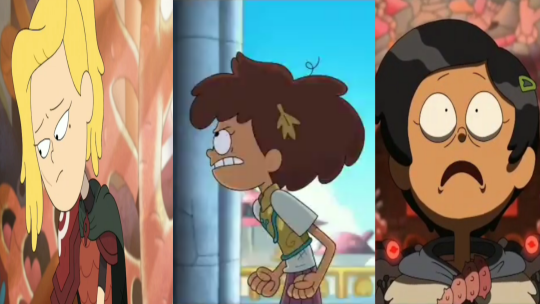
True Colors’ most powerful strength it adds to Amphibia’s ongoing profound story about healthy friendships is the thorough deconstruction of these girls defined “ideal relationship” as people. Before Anne came to the world of Amphibia this kid was afraid to stand up for what she believed in, even knowing especially well that stealing the calamity box was morally questionable, but did it anyway. Sasha was super manipulative, abusive, and used her power to control people, like she did a lot of toward Anne in their lives. Marcy, while very smart, wasn’t the most competent physically, who soon grew into being more independent without needing to rely on Anne always having to be there for her. These three were changed immensely by the events of being thrust into this world of sentient amphibian creatures. Anne benefited morally most out out of all three in taking up the mantle of responsibility and ironing out her own issues. She’s become a much stronger person all around.
This episode asks us an important question though in nutshell with, “Have Sasha & Marcy truly changed for the better?”, since Anne has reached a point in her arc feeling genuinely content with who she’s become and the bonds that have been made with the Plantar family shown most notably with Sprig Plantar. Hence the whole purpose behind the song, It’s No Big Deal, with Anne feeling proud for who she is, yet not noticing a bigger issue right underneath her nose. That previous episode was meant to bring Anne’s happiness up only to bring it all crashing down in a devastating display of new revelations in True Colors. Every dramatic emotional beat isn’t just earned. Each significant moment is completely knocked out of the park by terrific voice acting, beautiful animation, and music composition that gave me serious emotional goosebumps. True Colors did exactly as Not What He Seems accomplished for Gravity Falls in shaking up its own respective dramatic stakes just when you thought it couldn’t get any higher for these protagonists. Shit seriously hits the fan here.
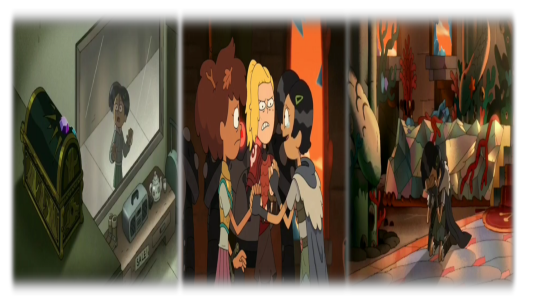
Did it ever occur to you, Anne? Sasha? That one of you knew more, than she was letting on? That ONE of you might’ve gotten you stranded in Amphibia on purpose...?
The big bombshell twist of Marcy playing a part too in getting them into this whole debacle completely flips everything upside down. Sasha pushed Anne into taking the Calamity Box, yes, but if Marcy never sent that photo because of her desire to stay with them together forever, then they wouldn’t have been stranded in basically a world full of dangerous creatures and who knows what else. Easily my favorite part of the episode, considering it adds more nuance to a situation that defined Amphibia’s story. It wasn’t just one person’s fault at the end of the day. Sasha bullied Anne into taking the box, Anne didn’t put her foot down to make a stand for something morally questionable, and Marcy took advantage of them both to benefit her own selfish desires for supposedly a “happy ending” not involving them staying apart, due to her parents moving away for a new job. All three girls played an important part on why they got landed into Amphiba. It’s why Anne’s statement to King Andrias, “The three of us may have made some mistake, but you...You’re evil and I’m gonna stop you!”, holds such a real weight to it, as this story continues to solidify how genuinely fleshed out their dynamic is.
Marcy’s super desperate plea to be understood by Anne & Sasha when Andrias revealed her getting them thrown into Amphibia purposefully was hard to watch. On one hand, I felt for Marcy because she didn’t want real life circumstances to tear apart that close connection she had to Sasha & Anne. Sure, she could’ve just kept in touch with them over the phone or chatting online, too. However, Marcy had known them since very early childhood. When you’ve been so attached to someone it can be a devastating thing, depending on just how vulnerable you are emotionally, to start drifting apart. Marcy represents that embodiment of toxic need for togetherness and couldn’t bear to let a possibility, like moving away, throw a wrench into her happiness and friendship, as well.
Never mind Marcy wanting to stay permanently in a different reality, rather than face her’s, but it made this person feel like something more. It gave her a chance to feel truly special in being able to live out a fantasy dream of having such power and freedom that a kid, like herself, couldn’t have had. The freedom to know she is plenty capable of making it out there on her own without Anne having to watch this kid like a hawk. So, to have someone, or something, try taking it away from her terrified Marcy of facing a terrible truth. That she isn’t strong enough after all to live a life without Anne & Sasha by her side completely, where Marcy will never feel truly worthy enough to blossom into her own person. It’s why that line, “I just...didn’t want to be alone...”, carries such a deep pain to it all. Marcy just crumbles into pieces accepting her greatest weakness. As much as Marcy fumbled the ball big time, it’s so easy to empathize with her on the idea of feeling competent enough. Marcy never meant to hurt Anne or Sasha, but the sad crushing punchline is she very much did.
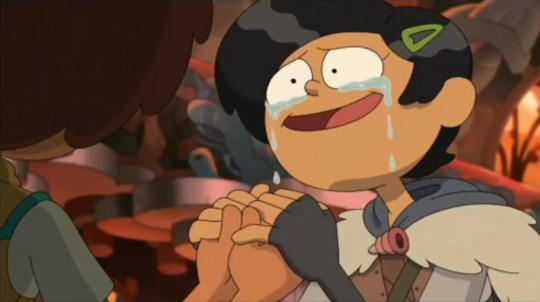
Speaking of which, Anne had every right to be upset and mad, obviously. Anne has been missing so many things from her life before everything went off the wall. Hopping Mall especially highlighted Anne’s emotional desire to give anything just to hear her mother’s singing again. This teenager has been really dealing with a lot of grief in general quite honestly. Anne got into a high stakes battle against Sasha to save new friends, who’d practically became like an adopted family, which left the poor girl traumatized and heartbroken over the end result. She thought finding Marcy would help compensate for it and eventually be able to mend those complications with Sasha to boot. It’s simply painful to see it all blow up in Anne’s face to know not only Sasha betrayed her trust yet again, but realizing Marcy also played a part of responsibility in getting them thrown here. Matt Braly really just decided to slap future trust issues onto Anne finding out Hop Pop, Sasha, and Marcy were all super dishonest in their intentions at one point or another. Damn, I feel so bad for her.
It makes their embracing hug back in Marcy At The Gates so much harder to watch. Anne was super glad to see her again. Anne had wondered what became of Marcy or even possibly started to think she could even be alive at all. Then come to find out later on Marcy having intentionally ripped her away from a normal life must’ve felt worse then what happened with Sasha. Anne, already done with all of Sasha’s bullshit, thought she could at least expect better from Marcy not letting her down, but that too wasn’t the case. Marcy is very much as flawed as Sasha in what she has done. To think, Anne wanted so badly to get back home, yet she’s staring the very person dead in the eye, who ripped her away from it to begin with. Marcy knew Sasha would talk Anne into taking the box from that thrift shop, even if she wasn’t completely certain it would successfully teleport them away. Regardless of whatever good intentions someone can have in why they did what they did, it still doesn’t absolve them of said mistake. Fact of the matter is, Marcy tragically made her own bed, by choosing to mess with forces she couldn’t begin to comprehend and now has to face consequences, in spite of her not deserving them.
What really got to me was when Marcy tried to spin around Anne’s personal growth and close friendship with the Plantars as all entirely thanks to her. When she said, “I gave you this! I gave you everything!”, I was like, “Nope, that couldn’t be any further from the truth.”, seeing everything that has culminated in Anne’s journey of bettering herself. Marcy didn’t give Anne anything, but a one way ticket to cutting the kid off from her family, presuming she’d be fine with this idea. It’s all kinds of messed up, however what it boils down to is Marcy undermining Anne’s independence and agency. Anne’s moral judgement in decision making was what allowed her to create this new life she made for herself in Amphibia. Anne’s honesty as a whole led her down a path of togetherness, while Marcy’s lying landed her in a result of not wanting to be alone, costing her so much.
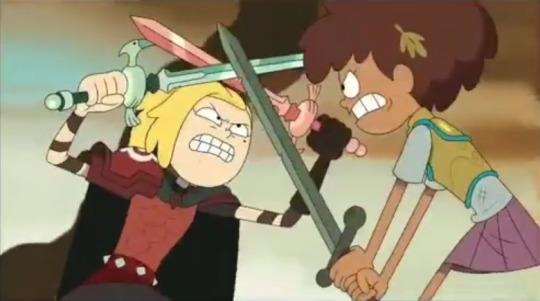
“I don’t believe this. We were so focused on each other we couldn’t see what was right in front of us!”
True Colors excels at earning each of its emotional beats because they line up with character motivations down to the last letter. Anne doesn’t want to trust Sasha anymore because of their already rocky past, which leads to her helping King Andrias regain control of his kingdom. Sasha not keeping a lid on her temper, wanting to rule over Amphibia, and trying to reinforce that power dynamic with Anne & Marcy only made things worse for her image of a changed good friend. There wasn’t a chance in Hell Anne would hear Sasha’s reasoning after she flat out tried to take away her frog family, by attempting to use the Calamity Box a bit ago in the episode. Marcy wanted to believe there was a happily ever after in seeing this world traveling idea as their only chance for salvation as friends for life, but it turned out to be something much more sinister, when learning of Andrias’ backstory and his true scumbag nature. All three of their motivations come clashing together, blinding them from a much bigger danger. Something that effectively puts everyone at stake.
Amphibia’s Season 2 finale works so excellently, given it covers important dramatic elements it’s been stirring around since Season 1′s early rumblings. Amphibia is a story centered around people’s need for emotional connections. True Colors builds miraculously off what Reunion already did quite well in showing friendships can become rough and they are never easy to deal with. When you have to make a stand it can be a tough pill to swallow on the reality check of maybe this “good friend” of your’s isn’t as nice as you previously thought them to be. Anne having been hurt one too many times now by her former friend sends that message close to home, so much so even Sasha begins to question her morality as a human being. It poignantly encapsulates how this trio’s complex friendship is a serious growing issue needing to be reexamined, overall.
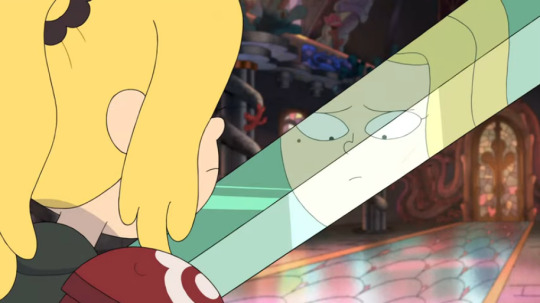
What if Anne’s right..? What if I am a horrible person...?
Something I absolutely love to pieces about True Colors, also a testament to Season 2′s darn good writing, is how much introspective we get from each character on what they’re feeling. We’ve seen plenty of Sasha’s vulnerability before in other episodes centered on her issues, but now we’re getting to the root of it. Sasha is really taking everything more to heart, little by little. Sasha’s understanding what kind of an effect she has on people, seeing the damage it has caused made evident by Percy and Braddock in Barrel’s Warhammer. Grime once told her, “Some dreams have a price and not everyone is willing to pay it.”, where she’s questioning that idealism every passing minute the invasion plan proceeds further into reaching success. Sasha isn’t sure what to do with herself anymore feeling aimless. Those previous episodes had a real impact on her priorities more than she cared to let on with Sasha’s typical tough girl act. This kid has let her guard down more, which scares and confuses Sasha. She’s always used to playing the role of protector it contradicts everything Sasha stands for when the roles are totally reversed because now Anne has made her feel the tremendous change in their growth as individuals.
Sasha’s lifestyle has been all about control that after somewhat learning to be more considerate to Anne & Marcy’s feelings she feels beyond conflicted about what truly matters to her. The most screwed up part of it all is Sasha didn’t want to fight anymore, taking up a pacifist approach after seeing what King Andrias had been hiding from everyone. It’s a fitting punishment for Sasha to try bringing Anne over to work together once more, but getting her pleas for companionship outright ignored. Anne was correct that Sasha had wasted all the chances to be reasonable. Boonchuy tried to hear out Sasha before at The Third Temple. One wanted to start things over again to iron out their serious issues, but the other was driven by bitterness, while only remorseful to a degree at best, of seeing their once weak friend become so independent, mature, and stronger that it drove her up wall. Sasha wanted to take away that “problem” being the Plantars, since in her eyes they’re the source of Anne’s strength, driving a wedge further between the two girls in their heated Reunion 2.0 battle.
True Colors demonstrates the horrific price of no trust, communication, nor teamwork from the three main girls that Andrias smoothly took advantage of, as if they were fiddles.
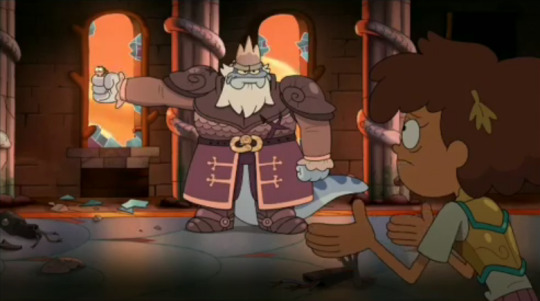
“That’s the thing about friends isn’t it? The more you love them, the more it hurts when they go.”
King Andrias is quite literally what I wanted Lunaris to be, where DuckTales’ Season 2 finale didn’t impress me on doing. He’s a serious big baddie to the main cast, who follows through on his threats of violence to demonstrate his wide array of arsenal and power. Andrias doesn’t just emotionally manipulate characters, like poor Marcy, but utterly crush them without an ounce of remorse for his actions. When he dropped Sprig out that window after Anne willingly let him have the Calamity Box back I thought they were legit gonna kill this boy off. The way Anne’s flashback montage of her good times with Sprig were eerily shot really didn’t help either on that note. Anne’s Calamity power finally activating is easily up there among stuff, like Dewey risking his life for Della’s disappearance in Last Crash, where the cinematography is shot and animated brilliantly. You feel Anne’s blind raging sadness in every hit she landed on those robots and Andrias. If anyone didn’t believe Sprig was like a little brother to Anne, then I dunno how anyone couldn’t view their bond anymore as such after this hugely defining scene. Anne went bloodthirsty when she believed Sprig to be dead further evidenced when she hugged him in relief afterwards exclaiming, “Sprig!? You’re alive!? Oh, thank goodness...”, which cuts deep so damn much.
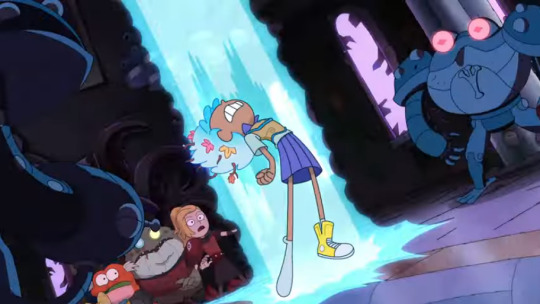
Anne was ready to fight every one of Andrias’ troops in that castle to the death, if need be. Before Sprig came back from falling, thanks to Marcy’s quick acting, to comfort Anne, her only goal was to slaughter every opponent in that throne room, along with making Andrias pay dearly for even daring to lay a single finger on anyone of the Plantars. I’m not gonna lie, this pivotal power up reminded me so much Gohan turning Super Saiyan 2 after Cell curb stomped Android 16 into pieces with a smirk on his face. Anne Boonchuy’s maddening outburst is a classic testament to the idea of, “Piss off the nicest person and they’ll make it their mission to instill the biggest kind of fear/terror into you.”. showing this kid at her most vulnerable mental state, yet. Sprig & Anne’s cathartic embrace really messed me up in reinforcing just how these two respect, love, and would go above any of their limitations to help the other out. Sprig’s “death” scene was a masterful bait by the writers into making us think someone was gonna die and it was gonna be a poor kid, no less.
However, it was actually all just a bait and switch for the real, “Oh, shit. They really just did that”, moment with Marcy unexpectedly getting run through with Andrias’ gigantic sword. In a last ditch effort, Marcy wanted to atone for what she had a hand in getting them all into. Marcy was ironclad determined in making her own stand for what was right trying to save the people she endangered. Akin to what Sasha did in Reunion for saving Anne’s life, Marcy does the exact same here. Although, unfortunately this time, no one is here to protect Marcy from escaping death, like Grime catching Sasha from plummeting at Toad Tower. Marcy couldn’t react in time because she was so focused on helping her dear friends out. She wanted to prove to herself at least one time, “I’ve screwed up so much stuff with my friends. Maybe, just maybe. If I get my friends back home, it’ll prove I’m not an entirely crappy person for setting these events into motion.”. Marcy’s own deep seeded remorse is what saved Anne & the Plantars, while being the cause of her own untimely demise at Andrias’ hands.
This scene is what no doubt encouraged the warning sign for younger viewers Disney decided to make for them. It’s impressive how far Matt and his crew are willing to go for intense dramatic content. Andrias trying to crush Polly with his fist after destroying Frobo with casual ease, dropping Sprig out of the window from up sky high, and stabbing Marcy with his powerful sword displays his cold blooded brutality. Doesn’t matter who you are. If you get in the way of Andrias’ plans for multiverse domination, then he’ll throw anyone into their own grave, be it man, woman, or child. That’s the mark of a truly terrifying antagonist.
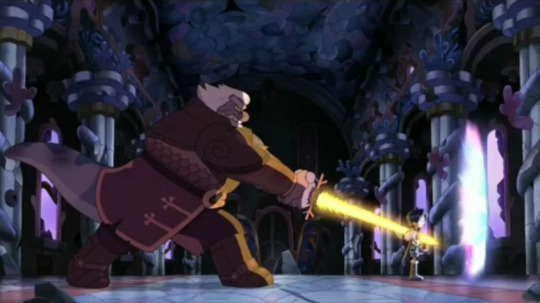
Andrias didn’t care who had to be hurt or manipulated to get back the box, so he could invade other worlds with Earth being his next prime target for invasion. Marcy’s fate is a horrifyingly poetic statement, since Sasha stated to Anne in a flashback from Marcy At The Gates, “One of these days, she’s gonna get herself killed.”, with True Colors tying back to this line in a disturbing manner. Something that sends chills down my spine is we get to see the full extent of how far Andrias shoved the sword through her body. We don’t just see the entry point of where it hit her, but it even zooms out to show the whole thing. Real talk, I got serious Avatar The Last Airbender vibes from this scene. Reminded me so much of Aang getting suddenly zapped with lightning by Azula when he tried to enter the Avatar state. Marcy didn’t want to be alone so badly she ended up inevitably dying alone trying to send Anne back home to their reality. One Hell of a way to close off Marcy’s last moments in Season 2, until her inevitable resurrection happens in Season 3 now that King Andrias has her in a tube tank that looks tied to his master.
True Colors ends on a deeply bittersweet cliffhanger leaving the fates of Sasha & Grime totally unknown if they’ll get away by the skin of their teeth, or get captured by Andrias’ soldiers and robots. Anne finally returned home with the Plantars, but at a deadly cost of leaving her other close friends behind in Amphibia. After all the isolation, heartbreak, and endurance she went through with her frog family Anne finds herself at a total loss for words. Once again, Anne is in a state of solitude of not knowing if her friends are really okay or not, mirroring the start of Season 1 when she landed into Amphibia’s world. It’s safe to say to say that, “Finally me and it’s no big deal.”, lyrics have aged terribly for Anne’s realization of finding her own identity came at the expense of getting separated from friends she’s known since kindergarten. Definitely see Anne becoming a lot more protective of the Plantars now more than ever after watching Marcy drop to the ground from being stabbed in front of her eyes.
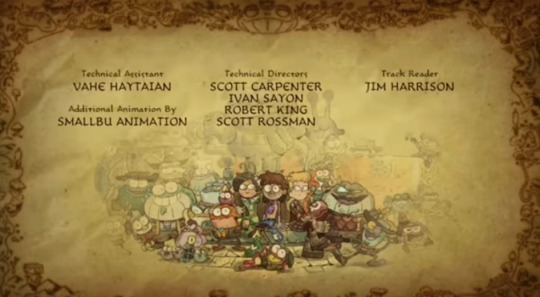
Amphibia’s Season 2 finale is exactly how you capitalize on a winning story telling formula of dramatic writing, lovable characters with layered depth, and increasing the stakes of your story in an organic manner. True Colors is a finale that should be talked about for a long time to come, as it not only showed how worth the wait it was, but reinforces why Amphibia is a truly great series. It’s unafraid to take its characters to dark places in a way that feels totally earned.
Amphibia Season 2 is everything a sequel to a first film should be.
#amphibia true colors#amphibia spoilers#amphibia season 2#anne boonchuy#marcy wu#sasha waybright#sprig plantar#polly plantar#hop pop plantar
69 notes
·
View notes
Text
So I finally got around to finish season 1 of Walker! (Spoiler review)

Yeah it took a while and I’m not going to lie. If it wasn’t for Jared Padalecki, Walker is not the kind of show I would usually even attempt to watch. It’s just not my thing. The season has a slow start. A lot characters and storylines to set up afterall. It’s one of the reasons why it took a long time for me to finish it. Also the amount of hiatuses this show had was ridiculous. That is no way to air a show CW. That’s just plain annoying and I can’t imagine that doing the show any favors. So that also made me want to wait to continue to watch so I could watch a little less interrupted.
I’m gonna put it under the cut in case since it gets a bit long.
That being said the show gets a lot better as it goes on so I’m glad I didn’t stop watching after the slow start. Of the earlier episodes “Duke” (1x05) was a great one. “A Tale of Two Families” (1x12) is great, but made me feel rather negatively about the Walker family and how they threated Cordell after the loss of his wife. At the same time they do get a nice developement by the end so I forgive it.
“Defend the Ranch” (1x13) is easily in the top 3 best episodes along with the two last episodes “Dig” (1x17) (directed by Richard (Gabriel in SPN) so that’s always fun) and “Drive” (1x18). So yeah I do find the most action packed episodes the best, but by this point in the show I do care for more of the characters and actually enjoy the quiet moments too.
There’s some real stupid moments in the show for sure. Like the throwback clips to before the kids were born... and we’re supposed to believe they looked the same 16 years ago? A little hard to swallow and I admit I laughed out real loud at that. I adore Jared, but dude. That age gap and seemingly no attempt to make them seem younger? Also the manips in one of the last episodes of Cordell in some photographs? Holy s*it that was terrible photoshop hahahha. Minor moments, but quite cringy.
The acting in the show I think is in general good. Nothing too mind blowing, but I do think Jared and Lindsey Morgan are fantastic. They have some real good acting moments and I love their characters and their bond. Jeff Pierre as Trey is also real great and Matt Barr! I loved Hoyt! It was such a mistake to kill of that character so soon! So Jared, Lindsey, Matt and Jeff are def. stand outs for me in this show so far! The kids are not bad either and I do appreciate that they are actually played by actual kids. That’s not always a given in Hollywood. As for the bad acting I don’t quite love Walker’s mom, played by Molly Hagan. She’s not terrible, but I’m not real fond of her character. And I really wish they had hired someone else for Emily Walker because I have never found Genevieve Padalecki a good actress at all and it’s painfully obvious the only reason she got the job is because she’s married to the lead. Luckily she’s not that much in the show, but her scenes could have been so much better with a better actress. As for the future I hope we don’t see too much of her, but mainly because Cordell needs to move on.
So I should round this up and talk about the reason I watched the show. Jared Padalecki. I keep seeing some peope say they can’t stop seeing Sam Winchester in Cordell and i’m like ??? Get out. If you actually watch the show you will see a great difference between the characters. It’s not Jared’s fault his face is the same lmao. I think he does great and gets even better as the show goes on. Cordell is very likeable and very flawed and is a lot of fun to watch him deal with everything. I can’t wait for the next season and see where this continues!

And on a superficial note, he looks bloody fantastic! A feast for the eyes! Like most of the men in this show ;D
#walker#walker cw#jared padalecki#cordell walker#walker 2021#spoiler review#sorta#more of me just rambling on#personal opinons#dont take offense here ok?#i am entitled opinions you might not agree with#long post
4 notes
·
View notes
Text
Best of Marvel: Week of January 1st, 2019
Best of this Week: Thor #1 - Donny Cates, Nic Klein, Matt Wilson and Joe Sabino

What a Thunderous way to begin the New Year! What better way to celebrate than with a glorious new #1 for the new King of Asgard helmed by the ever amazing Donny Cates, Nic Klein and Matt Wilson with awesome letters by Joe Sabino! This book hit so many good notes and lets me breathe knowing that one of Marvel’s most storied characters is continuing to be in good hands, especially after such an epic run by the awesome Jason Aaron.
The book begins with an amazing splash page of Mjolnir flying through space and then crossing into each of the Ten Realms as someone narrates Thor’s rise as the new King. It’s a beautiful sequence that alludes to the millennia of war between the realms, culminating in Malekith’s Invasion of them all very recently. Klein and Wilson treat the reader to a variety of landscapes from the bright pinks of Alfheim to the cold blues of Jotunheim. The pair do an amazing job characterizing these locales through visuals alone.
Of course, the reasoning behind the monologue and the throw itself is a show of force. Under Odin, the Realms fought each other as they pleased. Asgard was left in ruins because the All-Father was too stubborn to try and rally his people during Malekith’s Invasions. Under Thor, that would not be the case. As Mjolnir cracks through each Realm, without any of them hearing his words, they know to listen and fear him because of his power. This epic opening climaxes with Mjolnir crashing through the head of some monster the Avengers were fighting before Thor calls it back with a smirk from Asgard.
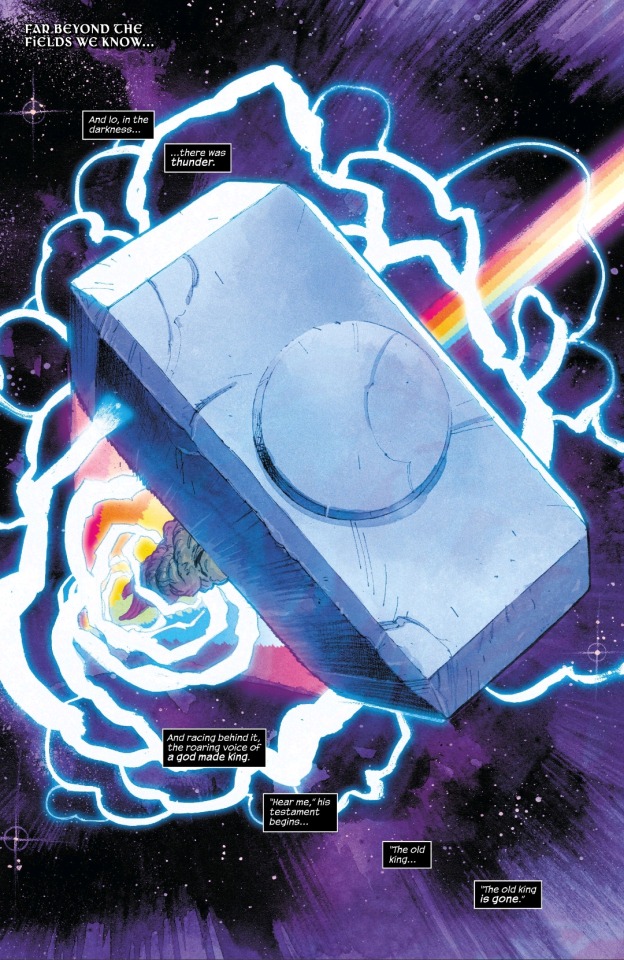
It is at this point that we finally see Thor, months after the War of the Realms. He is gruff, his hair and beard have grown out again and we learn through Tony Stark sharpie-ing a message on Mjolnir that Thor has retired. Sif the All-Seeing reiterates this as she informs the reader that Thor’s smiting days are over and that he must go and be King.
This is...saddening in all honesty. Thor has spent many a lifetime fighting, drinking and avoiding his destiny for so long. He has always wanted to be king, but even as he walks down the Rainbow Bridge back to New Asgard, he looks as if there’s nothing but melancholy about him. The way that Klein frames this panel makes it seem as if there’s a wide divide between Thor and Asgard. The Realm flourishes now that life has been brought to it under Yggdrasil, but Thor is bored.
As he takes a seat on his new throne, we’re shown just how different he is to Odin. Instead of a shimmering palace, Odin’s hall is made of wood and stone because of the World tree with a rune etched just above his seat: Thurisaz, a symbol of defense and destruction (as the book describes) and perfectly fitting of the warrior king. He ushers his court out of his presence and sighs as he prepares to speak to his people and Loki appears from the shadows.
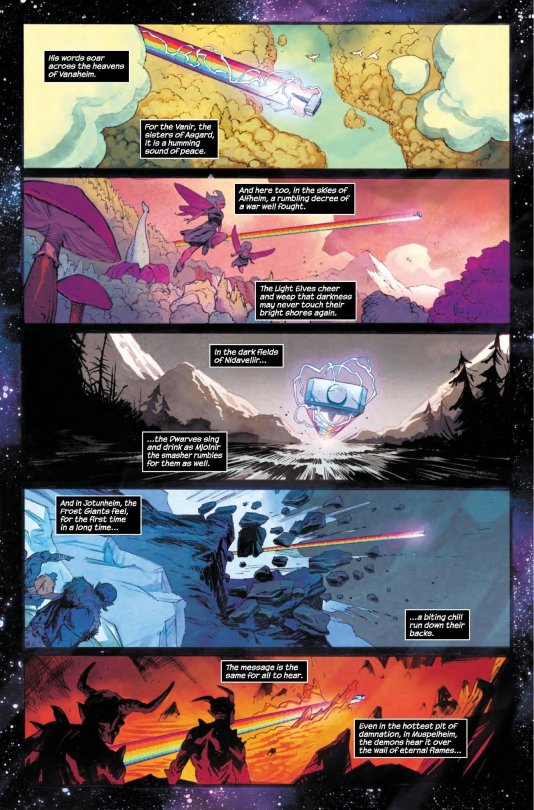
The brothers relationship here is far more confrontational than I would have expected. Granted, I didn’t read the Loki mini-series, so I don’t know if the Trickster did something to draw his brother’s ire. Thor is very terse with the King of Jotunheim and even throws Mjolnir in slight fury after Loki notes that Thor had to grunt when he lifted the hammer, something he’s never done before and a black portent for Thor’s future. Loki didn’t come out with any of his normal witticisms which was unexpected, but Cates does hint that there a potentially big things in store for the brothers through some narration.
Thor had been meant to speak to his people following the restoration of Asgard, but just as he’s about to regale his people of the new era of peace, his nervous butterflies turn to abject horror as a one armed Galactus crashes into Asgard, right on top of the Asgardians. Nic Klein and Matt Wilson spare no expense in making this one of the most epic double page spreads imaginable.
Galactus face of pain and sends a shiver down the spine as one wonders what could possibly have sent him crashing in the way that he did. The debris, people and smoke fly around the edges of the pages as Galactus’ impact and the snow that follows him creates a sense of unease. Klein makes sure that the reader can feel the weight of the crash and Sabino accentuates it with his EXCELLENT “KRAKOOOMM” sound effect. Wilson excellently blends Galactus varying purple tones to the fire just behind his head to create a sense of extreme heat. Klein creates a grand sense of scale as Thor appears miniscule to both Galactus and the incoming threat.
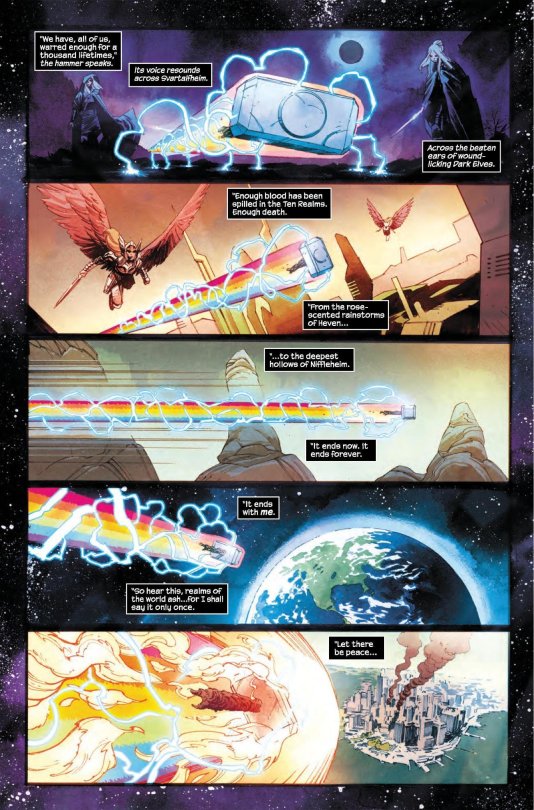
Not knowing what the hell had just occurred, Thor leaps a Galactus with every intention of sending him to Hel herself until the Eater of Worlds pleads with him to stop, warning him of something called “The Great Black Winter.” Part of said Winter had followed Galactus and caused the skies of Asgard to be cursed with rain and The World Tree began to turn black and die. Thor then calls previous Heralds of Galactus to see what is going on. At the table sits Firelord, Cosmic Ghost Rider and others until the Silver Surfer arrives, still black and intangible (See Silver Surfer: Black).
Thor is angry and demands answers which the Surfer is able to provide. We learn that The Great Black Winter was the event that destroyed the Universe before the one we know today and that the Surfer had hidden away powerful planets for Galactus to consume precisely for this occasion. Cates has done an amazing job in building a new lore and power scale for the Silver Surfer in particular as normally he’d have no secrets from his master.
As Thor dons his vestments of war, he thinks back to Sif and Loki’s words of his bygone days as a warrior. It’s a powerful set of panels as Thor seemed ready to enjoy his days of peaceful boredom. He grunts like an older man only snapping his cape on, but that doesn’t stop his kingly heart as when he approaches Galactus, he commands the World Eater to kneel to him. As The Surfer fills Galactus in on his plan, Galactus tells all about what lies in the void of the Great Black Winter; The form of ones own true death. Galactus reveals that he had gazed into it twice. First he saw the void because he couldn’t father the future things that he would see and next… he saw Thor.

The revelation comes as a shock to everyone as Galactus then blasts Thor with an immense amount of energy. Kein and Wilson make sure to shower the pages with bright light, intense lines and posing until revealing Thor: Herald of Thunder, similar to the cover of the book with Thurisaz as the new symbol of his chest.
Donny Cates has a particular style when he writes. He scripts grand moments interlaced with shorter ones that build character. It worked when we got into the psyche of the Silver Surfer as he explored the primordial state of being and Thanos as he watched a future where he had killed all of life. Cates has an affinity for the cosmic characters and it shows as he’s taken the reigns of Thor and reminds us of why he and his lore have been able to capture our imaginations for so long.
Thor has the ability to transverse the Ten Realms, the entire universe if he wishes, but even he suffers the melancholy of duty and boredom. He is a warrior at heart and he needs a great battle to fight in or he loses a part of himself that kept him motivated. With that in mind, Cates is looking to take Thor on a grand adventure in the stars with a buffed powerset that hopefully will expand on his greater strength in the Old King Thor future.
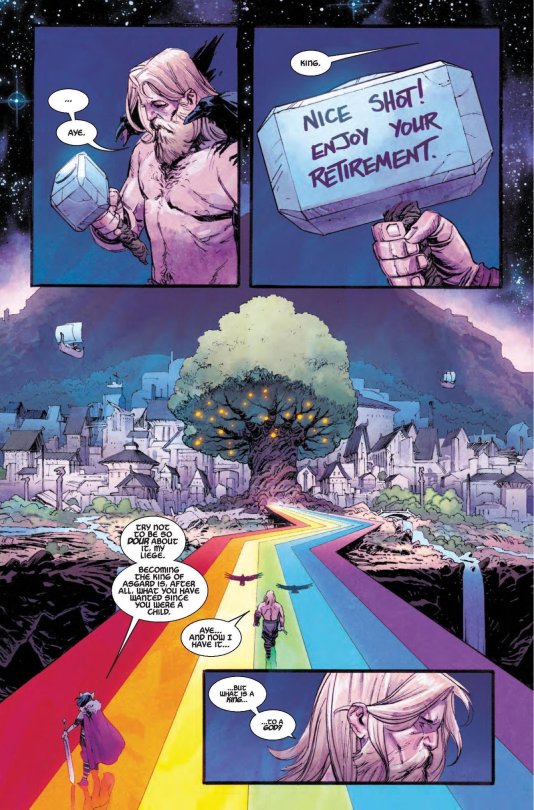
Nic Klein and Matt Wilson make all of this possible however with their amazing art. Klein is easily able to get into the groove of drawing these vast environments, amazingly dynamic poses and heavily expressive faces. Wilson brings it all to life with beautiful and vibrant colors that make you feel as though you’re in there, interacting with the characters. Without them, this wouldn’t feel as epic as it does.
This was a very explosive issue and I’m absolutely excited for the future of this series as I have been with all of Cates’ other work up to this point. It’s definitely a high recommend from me for a promising story and absolutely fantastic art!
#thor#loki#galactus#cosmic marvel#marvel#comic review#donny cates#nic klein#matt wilson#norse mythology
23 notes
·
View notes
Text
"MEN IN BLACK: INTERNATIONAL" (2019) Review
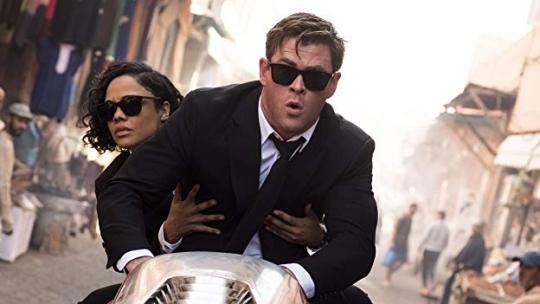
"MEN IN BLACK: INTERNATIONAL" (2019) Review Last year, Sony Pictures had announced its intentions to add a fourth entry to the MEN IN BLACK" movie franchise. I have to be honest. I did not receive the news with any real enthusiasm. And my feelings had failed to change when I learned the identities of the movie's two main stars.
"MEN IN BLACK: INTERNATIONAL" only shared a few similarities to the franchise's past three films. One of the co-stars proved to be Emma Thompson, who had returned for her second appearance in the franchise as Q, the MIB agency's director. The agency's Manhattan office also appeared in the film. And the MIB agents were up against another deadly alien trying to conquer Earth. Otherwise, there were major differences in this fourth film. Instead of Will Smith and Tommy Lee Jones, "MEN IN BLACK: INTERNATIONAL" starred Chris Hemsworth and Tessa Thompson, who had been co-stars in the 2017 Marvel film, "THOR: RAGNAROK". Most of the "MEN IN BLACK: INTERNATIONAL" locations were set outside of the U.S. in London, Marrakesh, Naples and Paris. The last difference featured the circumstances surrounding the recruitment of Tessa Thompson's character into the agency. Unlike Will Smith's Agent J, Thompson's character had become aware of the Men in Black agency years before she joined it. The biggest difference between this film and the previous three movies involved a potential threat within the internal affairs of the Men in Black. In 1996 Brooklyn, a young girl named Molly Wright witnesses her parents being neuralysed by Men in Black agents, while she helps an alien escape. Twenty years later, Agents H and High T of the MiB London office travel to Paris to stop an invasion of the Hive – a parasitic race who invade planets by merging with the DNA of the conquered species – at the Eiffel Tower using a wormhole included in the original migration to Earth. After being rejected from the F.B.I. and the C.I.A., due to her "delusions" regarding alien life, Molly tracks down an alien landing and follows MiB agents to their New York City headquarters. Caught entering the agency, Molly makes an impression on the agency's director, Agent O and becomes probationary agent status as "Agent M". She is eventually assigned to the London branch. Agent M's new supervisor is High T, who has become head of the London office. The latter assigns her to become Agent H's new partner, who has developed a God complex, unconcerned with his duties and only keeping his job due to High T covering for him. Both M and H are assigned to guard a royal alien named Vungus the Ugly, during the latter's visit to Earth. A pair of alien twins manage to fatally injure Vungus. The latter gives M a strange crystal before he dies. And the agents of the London office realizes that a MiB agent may have betrayed Vungus to the alien assassins. Due to his lackadaisical behavior, H has become the main suspect. However, this does not last long and M eventually becomes tagged as the agency's traitor. M and H take matters into their hands and decide to conduct their own investigation - an act that leads them to become fugitives from the Men in Black agency. Following the release of "MEN IN BLACK: INTERNATIONAL", many critics and fans of the franchise had rained criticism and scorn upon it. Needless to say, the movie proved to be a box office failure, despite making a small profit. It is considered to be the worst film in the franchise. While many blamed the movie's narrative; the majority of the film's negative press seemed to stem from the fact that the movie had not been directed by Barry Sonnenfeld, who was responsible for the franchise's first three films. And there were a handful of disgruntled fans who seemed to resent the presence of Tessa Thompson as one of the film's leads, due to her gender. How do I feel about all of this? I do have a few problems with "MEN IN BLACK: INTERNATIONAL". One, this movie is not funny. What I meant is . . . it lacked the twisted and sardonic humor of Barry Sonnenfeld. If I have to be more specific, the film's humor barely generated any real laughs from me. I merely found myself feeling amused by some of the more comic moments. My second problem with "MEN IN BLACK: INTERNATIONAL" was Agent H's fate near the end of the movie. I did not like it. Considering his age and recent mental condition, I thought he was unnecessarily rewarded for his actions in stopping the main villain. My final problem with the film is basically minor. "MEN IN BLACK: INTERNATIONAL" featured the character of Agent O from the 2012 film, "MEN IN BLACK 3". To me, this was an indication that "MEN IN BLACK: INTERNATIONAL" was a continuation of the previous three films. If so, I thought screenwriters Art Marcum and Matt Holloway could have hinted on the fates of Agents J and K from the first three movies. What happened to them? Despite my complaints about the film, I did not dislike "MEN IN BLACK: INTERNATIONAL". In fact, I enjoyed it very much. And this was due to certain aspects of the film. One, I found some of the movie's special effects rather impressive, thanks to the visual effects team, Stuart Dryburgh's cinematography and Thomas Brown's art direction team. I was especially impressed by those scenes featuring Vungus' death in London, H, M and Pawny's escape from Marrakesh and especially their final showdown against the Big Bad at the Eiffel Tower in Paris. Another aspect of "MEN IN BLACK: INTERNATIONAL" that I enjoyed was its cast. Personally, I thought it was first-rate. The movie benefitted from a solid supporting cast that included Laurent and Larry Nicolas Bourgeois (aka Les Twins), who did an excellent job of conveying the silent, yet physical menace of the shape-shifting aliens known as "the Twins"; Tim Blaney, who returned to voice Frank the Pug; Kayvan Novak, who voiced the royal alien Vungus the Ugly; and Spencer Wilding. I found Rafe Spall's portrayal of Agent C of the UK branch rather sardonic, yet entertaining. Emma Thompson was excellent as usual as the Men in Black director, Agent O. Rebecca Ferguson gave an eccentric, yet funny performance as an alien intergalactic arms dealer and H's ex-girlfriend Riza Stavros. Liam Neeson's portrayal of High T, the head of the MIB UK branch, struck as equally off-beat and funny. And I felt that Kumail Nanjiani gave the best voice performance of all as Pawny, the small alien warrior that Agents M and H befriend. And of course, we have the movie's two leads - Chris Hemsworth and Tessa Thompson. Many crtics had been impressed by their screen dynamic in the Marvel film, "THOR: RAGNAROK". This led the producers of this film to cast them together as Agents H and M. And they did not fail. Thompson did a wonderful job as the uber observant and clever Molly Wright, who becomes the agency's newest recruit, Agent M. Hemsworth did an equally fantastic job in portraying Agent H, one of the agency's best agents who seemed to be suffering from some kind of post traumatic stress disorder (PTSD), following his and Agent High T's defeat of the Hive, three years earlier. Not only did the two leads gave great performances, they also proved that their on-screen dynamic had not dimmed one bit. If I must be brutally honest, I was more impressed by their screen chemistry in this film than I was in "THOR: RAGNAROK". I realize that many people may not agree with me on this next topic. But if there is one thing that truly impressed me about "MEN IN BLACK: INTERNATIONAL", it was the screenplay written by Art Marcum and Matt Holloway. I found it very original for a movie from the MEN IN BLACK movie franchise. The previous three movies usually introduced the Big Bad either in the opening scene or not long after the opening. I cannot say the same for this film. Both Marcum and Holloway had not only created a mystery surrounding the Big Bad, they also included a possible traitor or mole within the Men in Black agency that might be assisting the main villain. Now this might be normal in a MISSION: IMPOSSIBLE movie or some other spy thriller. But in a MEN IN BLACK film? For the first time, this franchise had created a combination of a science-fiction movie and an espionage flick. It is a pity that many critics and film goers could not appreciate this. Perhaps it would have been easier if the film had followed the franchise's usual formula. In the end, I realized that I would not waste my time lamenting on the box office failure of "MEN IN BLACK: INTERNATIONAL". It was not the first box office bomb that I ended up enjoying. And I doubt that it will be the last. Although I found the film's humor rather lukewarm - worthy more of a small chuckle instead of a belly laugh - I cannot deny that I truly enjoyed the film's narrative, along with the exciting action sequences and the talented cast led by Chris Hemsworth and Tessa Thompson, thanks to director F. Gary Gray. Many others may have been disappointed by this film. But I was not.

#men in black#men in black franchise#men in black international#f. gary gray#chris hemsworth#tessa thompson#liam neeson#rafe spall#emma thompson#rebecca ferguson#kumail nanjiani#laurent and larry bourgeois#les twins
9 notes
·
View notes
Text
Matt Reviews... Shadowbringers
Tossing a review of the Shadowbringers MSQ below the cut.
I ended up writing a lot more than I ever thought I would.
WARNING: HERE THERE BE SPOILERS.
I’m not exactly honest where to kick things off here, as I have a lot of thoughts.
WoW has been the MMO I solely dabbled in and played for the longest time before hopping into FFXIV in late 2017. I had tried it out before, but hadn’t really committed in the way I wanted to. When I finally got into Stormblood, something clicked there for me. A large part of it was finding the character I wanted to play finally, and another was being engrossed in this story centered areas of the lore that always had me interested.
I found Heavensward and Stormblood to be rather intriguing stories that continued to push the narrative along between expansion and building out the world, and expected more of the same from Shadowbringers.
But I had some worries too. The last time an MMO tried to pull off the “alternate dimension/universe” idea? It didn’t go the way a lot of folks wanted, and much was left on the cutting room floor.
Of course, that was a different game and company but I still had my concerns. My quibbles with previous FFXIV expansions also came into play; the story of Stormblood, which I liked, was uneven due to moving between two different locales and there have been examples over the years of some expansion events dragging a little bit*.
* I’m looking at you, post-A Realm Reborn MSQ content.
Nonetheless, I headed into the expansion with reasonably high expectations. Said expectations were not only met, but shattered. Shadowbringers is legitimately the best story I’ve ever seen implemented in an MMO, and it’s also one of my favorite stories in video games in a long time.
Shadowbringers is a story of sequences, of tension and release that pays off not only threads and plot points introduced early on in the expansion but from previous expansions as well. SE has always focused on long-term storytelling as part of their MSQ, but it’s more evident now than ever with this expansion.
For folks unfamiliar with the premise, your character - the Warrior of Light - is teleported to a world similar to their own but essentially on the precipice of total destruction and tasked with saving it alongside your companions from previous games. In the FFXIV universe, light and darkness are palpable concepts and balance is important. One without the other can lead to total destruction. In the player character’s world, the threat of world-ending calamity comes from the forces of darkness but in this alternate universe the threat comes instead from the Light.
In this world, your counterparts defeated the forces of darkness and disrupted the balance. This led to an apocalypse by way of The Flood, a wave of Light that engulfed the planet and destroyed everything except for a small section that you explore throughout the expansion.
Those who remain are scraping by and praying for a “warrior of darkness” to arrive while attempting to avoid the wrath of the Sin Eaters, the Light’s army of monsters that seek to eliminate and convert the remaining people. For a near century, the sky above is hidden under a layer of Light, a constant oppressive reminder.
The expansion does a fantastic job not only telling a tight and cohesive story that moves throughout the land, but it also succeeds in building out the world and making you give a damn. Sidequests that appear simple have a depth you usually don’t see in MMOs, and I’ve already had conversations with friends about certain side characters that most people would just meme at.
In a way, the MSQ works off a familiar premise that you see in most Final Fantasy games: you’re the big gods damned hero who’s arrived just in the nick of time to push back the big bad and save the world. It’s simple. It’s easy. But what Shadowbringers does differently is the emotional twists and turns throughout.
Long-standing characters like the Scions have new motivations, new things to care about, and new characters are given simple yet effective backstories and personalities that make you care in a matter of moments.
The latter makes me think of the Hrothgar character Runar, who has been living in the forests; even in a cult centered around the idea of darkness and bringing that back, he proves a warm and friendly character who cares about the people around him.
There’s also a Miqo’te couple in the opulent city of Eulmore that could have been the butt of so many bad jokes, but instead they’re woven into the main narrative with thought and care; they’re given a character arc and prove to be one of the more heartwarming stories of the whole expansion.
It’s these smaller interactions woven into the fabric of the narrative at large that make it so good. An attention to detail you don’t see in MMOs often is showcased throughout, and you have the ability to chat with numerous NPCs about events, both past and present.
While Shadowbringers has plenty of hope within its narrative, there’s so much heartache and tragedy too. There’s terrifying moments, pure body horror on display - yes, no joke. There’s a scene in the expansion that made me get out of my chair and have to stop for a moment. In fact, this happens on multiple occasions.
The moment of body horror I refer to surrounds a character named Tesleen, a young woman living in the Ahm Araeng desert. She is a healer who looks after the terminally wounded and dying, those who will become Sin Eaters post-death; she seeks to ease their pain in any way possible, including poison in their last meal that will carry them off to an endless sleep. It’s their way of life, what they do.
She becomes close with Alisaie, but unfortunately… things take a turn for the worse. Tesleen goes into the desert to seek out a child from the encampment and protects him from a Sin Eater, who converts her into one. What occurs is a terrifying scene, body horror on display as she is transformed into one. It is a raw and emotional display, one of many throughout the expansion.
It’s a tough watch, but it’s also how the expansion hits you in the heart. Some characters are lucky enough to escape from some tragic events, but they’re changed for the experience. When you think something might be happening, it often ends up getting worse.
The First is not a kind world. Yes, there are moments of hope but there’s an oppressive feeling throughout the expansion that the next moment could be your character’s last, that any of this could go wrong at any point.
But you have your friends. It’s here again I mention the Scions, your group of companions dating back even to the original release of FFXIV. Some have been on the First for years, and have been tasked by the Crystal Exarch (who we’ll get to later) with trying to help the people, to save them from the Sin Eaters and push back the Light. They have their own character arcs, their own development; some have changed for the worse, and others have changed for the better.
The new Minfilia stands out to mind here. She’s a character who is aware of her heritage, where she comes from, given the tales that have been relayed to her but she isn’t sure how to handle it, what to do with the information. She struggles as she learns about the world around her, but her character development is so fantastic to see.
Near the end of the story, she decides to become her own person and even takes on a new name where I thought she would embrace the role of “new Minfilia” and continue along that same path, which probably would have upset some folks.
Instead, it’s an idea of the twists and turns of the expansion. You think they’re headed one direction, and totally turn the other way. I can legitimately only cover a handful here because there are so many without feeling like being too overbearing.
I think it’s here where I talk about the villains of the expansion, as there’s a full array. Vauthry, the larger-than-life leader of Eulmore, regards himself as a leader free of sin when really he’s perhaps the worst of all. He is callous, cruel, vain, and has aspirations of becoming a god, of controlling the Sin Eaters.
His general Ran’jit is a great foil, an older man who fights with fists and feet. While Vauthry has been corrupted from consuming the flesh of Sin Eaters (yes, this happens), he truly believes in the righteous causes of his leader. There’s more than meets the eye with both characters; they are fascinating studies in how righteous causes can go so horribly wrong.
Then there’s Emet-Selch, an Ascian who has taken on the body of the previous Garlean emperor Solus. He was introduced in the post-Stormblood content, coming across as a wicked madman who appeared to have deeper motives. There wasn’t much to work off of then in terms of who he was.
There’s very good reason.
At some point in Shadowbringers, as you have begun to establish your resistance against the forces of the Light, he decides to accompany your party, to see just what drives you, keeps you going. He helps with reviving Y’shtola, as she decides to sacrifice herself during the story, as a way of gaining your trust.
Then he drops a bomb, a revelation. He does this time after time. In a way, Emet-Selch reminds me of a favorite character in Kreia from KOTOR 2.
They are liars and destroyers, but they also will lay the truth of their world out for you to clearly see, giving their own rational reasons for why they’re doing what they’re doing. Whereas Zenos was a fantastic villain in his own right, as he was an unapologetic villain, Emet-Selch is a different sort.
He’s a tragic villain.
He reveals the Ascians, this group of villains that didn’t really have much inspiration or any context outside of “we want to summon our dark god and take over the universe” before this expansion, as a tragic force. They were once a utopia, a society of thinkers and bureaucrats with unlimited power in the form of creation magicks that ended up destroying their world.
It’s here Shadowbringers really dives into the cosmology of the FFXIV universe in unapologetic fashion. It reveals insane truths about how the First, the Source, and other worlds are connected, how when worlds are “rejoined”, it causes cataclysmic events and thus leads further to the endgame of the Ascians.
They just want to go home and bring their people back, the majority of which were sacrificed in an effort to try and salvage their utopian home. As you get into the endgame of the Shadowbringers MSQ, you learn more about what exactly happened, what led to this, and how Emet-Selch is truly a tragic villain, someone who just wants to go home, wants to bring their people back. You see it in the way he walks, in how he talks; he is burdened by the hundreds of thousands of souls he considered his friends, his family.
They are gone. Only he and a few others remain, steadfast and committed to their cataclysm task of death leading to new life, a new chance.
This is only the surface of his arc and the backstory surrounding the Ascians. SE went ahead and made a group of villains I didn’t find particularly interesting into one of the most fascinating parts of their lore and universe.
It is because of this the ending of the MSQ is so tragic, so devastating, but also it’s a release. The sequence leading up to the final trial (boss) of the expansion is parts inspiring and heartbreaking, as your character - who has taken on the overpowering Light of the world into their body - nearly succumbs and becomes a Sin Eater.
But then you’re saved by another soul, a former Warrior of Light-turned-Warrior of Darkness named Ardbert. If you’ve played through the post-Heavensward MSQ, you know of him as a more antagonistic force-turned-tragic-villain but in Shadowbringers, he is a spirit, your guiding light. The reason why he eventually joins forces with you is an absolutely insane one, but it’s earned by the story at that point because they explain it. They show it.
It’s here where I find it difficult to really explain just what happens in this MSQ at times because I truly believe you have to see it and play through it. So many moments are earned, tragic or heartbreaking, and to explain it by way of a review in text would do it a disservice. You know a game’s story is good when I haven’t even really touched upon the zones you explore or the gameplay.
When the Shadowbringers MSQ finally ended, I just kind of sat there. Just thought upon everything I had seen, had played through, had watched. There’s some post-credits content that gives information on just what is happening back on the player character’s homeworld and it’s… interesting.
In a way I wondered just how they’d play up the threat back home because the threats on the First are so cosmic-spanning that it would be tough to go back to Eorzea and deal with the Garleans, but SE as always looks long-term and sets up some interesting pieces and plot threads that I feel like will be handled in the post-MSQ patches.
While I know some folks aren’t a huge fan of FFXIV’s gameplay, the main differentiation comes down to story and character development. SE gives a damn about keeping a consistent lore and storyline that covers multiple expansions, not at all letting up on the gas pedal especially in Shadowbringers. It is in this expansion that they completely triumph in all aspects: worldbuilding, tension and release, character development, and numerous revelations that fit so well within the lore they’ve established.
At the end of the day, there’s nothing more I can say or do than this:
Go play Shadowbringers.
#shadowbringers#matt plays ffxiv#shadowbringers spoilers#patch 5.0 spoilers#sometimes i write things
8 notes
·
View notes
Text
Vampirella Dracula Unholy #01

Vampirella Dracula Unholy #01 Dynamite Entertainment 2021 Written by Christopher Priest Illustrated by Donny Haddiwidjaja Coloured by Mohan Lettered by Willie Schubert The honeymoon begins! The adventure of several lifetimes begins as Vampirella and new husband Matt journey to Castle Dracula in Transylvania in an attempt to cheat fate by preventing both a high-tech virus and an ancient curse from using Matt's body to resurrect the deadliest threat the world has ever known. Meanwhile secrets and mystery grow around Vampi's spouse, who may not be nearly as innocent as he appears to be. It is stories like this that remind me why I love Vampirella as much as I do. Side note, this is a continuation of a thread that shows up in Vampirella #24 but if you haven’t read that don’t worry you can follow along here just fine as it’s completely new reader friendly. Anything you need to know is presented within these pages. The opening here really catches your attention and instils the desire to see what is going on. Precisely what an opening is supposed to do, and it does it oh so well. From there we go to the main story and see how things progress and I have to say part of me was shocked and another part of me completely understands how Vampirella could have fallen in love with Matt. I am a huge fan of the way that this is being told. The story & plot development that we see through how the sequence of events unfold as well as how the reader learns information are presented exceedingly well. The character development that we see through the narration, the dialogue, the character interaction as well as how we see them act and react to the situations and circumstances which they encounter does a magnificent job in bringing out their personalities. The pacing is excellent and as it takes us through the pages revealing more of the story and this keeps drawing us in with what we see. I am very much enjoying the way that this is being structured and how the layers within the story begin to emerge and grow. I also like the way that we see these layers open up new avenues to be explored. Whether or not these layers will be explored or not they all add this great depth, dimension and complexity to the story. How we see everything working together to create the story’s ebb & flow as well as how it moves the story forward are impeccably handled. The interiors here are bloody gorgeous. The linework is utterly brilliant and how we see the varying weights and techniques being utilised to create this level & quality of detail within the work that we see is phenomenal. I will say that I wish Matt had a hairy chest though. That backgrounds are utilised to enhance and expand the moments as well as how we see them work within the composition of the panels to bring out the depth perception, sense of scale and the overall sense of size and scope to the story makes me such a happy camper. The utilisation of the page layouts and how we see the angles and perspective in the panels show a remarkably talented eye for storytelling. The various hues and tones within the colours being utilised to create the shading, highlights and shadow work shows a sensational eye for how colour works. There are so many great threads happening within this issue, so many you’d almost think it would feel crowded but it doesn’t. The flow of the book and how we see these threads relate to one another and they can potentially link up is fantastic to see. Each one would be a great thread to follow but to see at least three being opened for exploration is just perfection. I’m excited by the prospect of what we’ve seen expanding. The writing is stupendous while the characterisation is flawlessly rendered and these bloody gorgeous interiors bringing it all to life the way they do is just the icing on the cake.

0 notes
Photo

Gamera vs Jiger (1970)
That’s right, Hollywood After Dark was actually so fucking depressing I decided the only thing that could cheer me up was a Gamera movie – and lo! When I typed our sabre-toothed saviour’s name into YouTube, up pops this film, which I’d never seen! Gamera vs Jiger was directed by Noriaki Yuasa, who brought us the other Gamera films, and features a really annoying noise and some even more annoying little kids!
The city of Osaka is getting ready to host some kind of world’s fair. Young Hiroshi is particularly eager to see it, as is his American friend Tommy, because their families are both intimately involved with the preparations. Hiroshi’s father, an inventor, is building mini-submarines for one exhibit, while Tommy’s, an archaeologist, is bringing in a mysterious stone statue all the way from Wester Island in the Pacific. The statue is called The Devil’s Whistle and the natives don’t want to let it go, because a legend says it’s the only thing keeping away something called Jiger. Boy, I bet that won’t come back to bite anybody in the ass, will it?
Turns out the reason the statue is called the Devil’s Whistle is because when wind blows over the hole in its top, it makes a really, really annoying sound that drives everybody insane – the crew of the ship transporting it, the audience, and a weird warthog-dinosaur-looking creature. Sure enough, this is Jiger, who sets out to destroy the statue and anything else it might happen to come across. Looks like a job for Gamera to me!
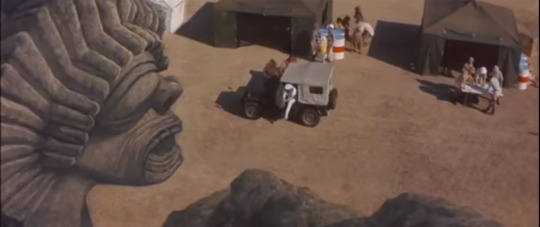
Now, the formula for these movies is to have Gamera get injured in an early fight, so that the people of Japan have to try to take on the monster themselves. They then fail, and Gamera miraculously returns, summoned by the whining of bratty children in tiny shorts, to save the day! That’s what happens here, too. So how does Gamera lose his first face-off against Jiger? Is he frozen, like he was by Barugon? Held at bay by a threat to children, like he was by Viras? Beat up and forced to retreat to the water to heal, like by Guiron or Gyaos?
Hell no! Jiger is much more creative. The first time the two monsters fight, Jiger fires quills into Gamera’s arms and legs so he can’t pull them into his shell and fly away, then rolls him over on his back and leaves him on a rocky island to starve to death! Then we have to watch Gamera try to flip himself over again using his tail, screeching out in pain the entire time, and it truly is the sorriest I’ve ever felt for him. Then at their second encounter, Jiger stabs Gamera in the shoulder with some kind of stinger, and Gamera staggers off in agony. There’s then this bizarre sequence where the kids take one of those tiny submarines down Gamera’s esophagus and find that Jiger has implanted a fucking embryo in his chest which is now devouring him from the inside out like one of those creepy spider wasps! Holy shit! Since when did Gamera do body horror?
Gamera spends so much of this movie in obvious pain, I think it would probably be rather distressing for a child to watch. The part where the embryo is growing inside him, and Gamera turns white with his skeleton briefly visible before his glowing eyes go out, actually distressed me and I’m in my thirties. I think this might be the only time I’ve actually seen the children in one of these movies give up on Gamera in what sounds like honest despair, when Hiroshi declares, “oh, he’s dead!” It feels weird to talk about a Gamera movie being dark, but this one gets there.
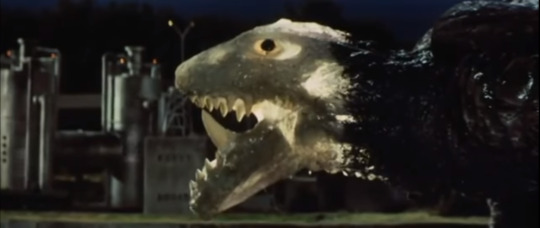
After the ridiculousness of Gamera vs Guiron, Gamera vs Jiger represents the series trying to regain some of its self-respect and the respect of its audiences (as demonstrated by the fact that the next installment was Gamera vs Zigra, it didn’t work). The dark content is probably an intentional part of this, and it sits a little uneasily alongside the cheerful absurdity that naturally comes of this being a Gamera movie. Sometimes it kind of works, but more often it really doesn’t. The miniatures and matte paintings are as terrible as anything in Mighty Jack or, for that matter, in previous Gamera films. The music includes classics like We’re Gonna Ride our Bicycles and of course the immortal Love Theme from Gamera, sung by a chorus of slightly tone-deaf grade-schoolers. The pun ‘Wester Island’ is kind of awe-inspiring in its sheer lameness, and the dialogue includes technical language like ‘it’s based on super-ultra-violent waves!’ The foleyed-in footsteps sound like all the actors are wearing tap shoes. The dubbing sucks. The dubbing of the children, particularly Tommy’s little sister Susan, is so terrible it actually manages to suck and blow at the same time.
My favourite nugget of silliness is the scene in which one of the scientists shows a slide of an x-ray of Gamera. How the fuck do you x-ray Gamera?! Imagine the host sketch in which Joel and the bots try to figure it out!

But Gamera movies, like all kaiju eiga, live and die by their monsters and the fighting between them. The Gamera of Gamera vs Jiger looks as dumb and rubbery as he ever did (I’m particularly fond of his belly-flop landings), but Jiger is actually pretty cool and mean-looking, with a surprisingly plausible quadrupedal gait – while Guiron always looked like a guy crawling around in a rubber costume, Jiger actually moves like a four-legged animal and I can only attribute this to a very gifted suit-maker. Some of Jiger’s powers, like its quill-shooting, are quite interesting and scary. Others, like its ability to fly by shooting steam out of its ears, are laugh-out-loud stupid.
The fights themselves are kind of interesting in that they are battles of wits, as well as monster fights. Both Gamera and Jiger are depicted as observing their enemy and learning from what they see. In the first fight, Gamera learns that Jiger will try to wrap its tail around his neck, and pulls his head into his shell at the last minute. Jiger learns that Gamera must retract his limbs in order to fly, and uses the quills to prevent this. The fact that both combatants are intelligent ups the ante quite a bit, without giving them the childlike human motivations that turned the monsters of Godzilla vs Megalon into cartoon characters. The brutality I mentioned continues into the final fight, culminating in Gamera impaling Jiger in the face with the statue that started the whole thing!
Just as often, of course, the fights are ridiculous. There is a bit where Gamera throws Jiger up in the air, but Jiger lands on the other end of the fallen tower Gamera is standing on, launching him into some buildings in turn like something out of a kaiju-fueled Rube Goldberg machine.
The setpiece sequence of the film, and the one that sets it apart from any other Gamera movie, is the Fantastic Voyage bit where the two boys go inside him with the submarine to remove the Jiger embryo. Fantastic Voyage was made in 1966, so I suspect it was indeed the inspiration. Unfortunately, Gamera’s innards are not nearly as cool as anything in the earlier film – and in retrospect, Fantastic Voyage doesn’t even look that cool anymore. Instead, the baby Jiger chases the kids around on an obvious stage set, among tunnels that aren’t nearly gooey enough to be something’s anatomy. The inside of Gamera’s lungs are made of inflated plastic bags with some algae inside them, and seeing the Jiger suit at its actual size is laughable. For all that, though, the sequence is sometimes pretty tense, and when it fails at that it’s at least amusing.

I do like Gamera movies in general. I mean, yeah, they’re not very good, they’re not particularly meaningful and they’re not gonna win any awards, but they’re fun to watch, fun to write about, and fun to heckle with friends. I’d even say that Gamera vs Jiger is one of the better ones. It doesn’t have the annoyingly irrelevant moral of Gamera vs Zigra, and a lot more money, effort, and creativity went into it than that movie or Gamera vs Guiron. It helps a lot that the kids here are a little older – Hiroshi and Tommy are specifically described as being twelve years old, instead of the five or six-year-old Kenny and Helen from Zigra. The kids do keep ending up in places they don’t belong but for once the adults respond fairly realistically to this.
In reviewing Gamera vs Barugon I noted that insofar as Gamera symbolizes anything, it’s probably childlike faith in good overcoming evil. Apparently I was right, because that is explicitly stated in the closing scene of Gamera vs Jiger – the adults admit that Hiroshi and Tommy were right about Gamera being the hero Japan needs, and that they should have believed in him. This is still a weird attitude to take towards a giant monster that wrecks almost as much shit as Jiger does, but I guess that’s just something you have to accept about kaiju eiga. There’s also some attempt at a statement with the world’s fair setting, in that what Gamera has saved is a place where all humanity can come together to learn from each other. Gamera movies do seem to be basically optimistic in outlook, positing that humans are basically good and higher forces are looking out for us, and that’s probably one of the things I like about them.
As one final note, the movie claims that ‘Wester Island’ is the last remaining bit of the lost continent of Mu. Godzilla vs Megalon did something similar with Easter Island and ‘Seatopia’, and was made only three years later… did one inspire another, or were Easter Island and Lost Continents just big things in Japan in the early 70’s? If the former, that represents a rather curious inversion: Gamera began his life as a ripoff of Godzilla, but many years later we find Godzilla movies stealing ideas from Gamera instead!
13 notes
·
View notes
Text
COMIC REVIEW - Power Rangers Issue 1
On Wednesday, November 11th, Power Rangers Issue 1 will be released from Boom Studios. Last week we got the first look of the second launch in the “Unlimited Power” era of Power Rangers comics.
POWER RANGERS #1 reveals a new cosmic threat that only the original Power Rangers, now known as the Omega Rangers – Jason, Trini and Zack – can hope to defeat! But their secret weapon is… the villainous Lord Drakkon?! Zordon forbids the Omega Rangers from engaging Drakkon, so if they want to save the universe then they’ll have to go rogue – and go up against their Mighty Morphin allies.
Host Eric (@trekkieb47) had a chance to read the issue in advance and shares his review:
“Following the launch of this past Wednesday’s Mighty Morphin Issue 1, the story continues in Power Rangers Issue 1. Think of the issues this month as a two-parter of the television show, kind of like a season premiere. While Issues 51-55 felt like a set up for this new arc, Mighty Morphin #1 and Power Rangers #1 are a launchpad for both series to take off in their own directions.
This particular issue sets the Omega Rangers on a quest that I don’t think will let them return to Earth anytime soon. The solicits make this point clear that they are on a forbidden path. Forbidden by whom? Zordon. Like Mighty Morphin #1, Zordon is an important part of the consequences going forward.
From the previews, readers should already know that there is a reunion between both teams as they discuss the Empyreal. The Omega Rangers are desperate for information, and it’s clear that Drakkon is the only lead.
There are some superb character moments in this issue. My favorite is a conversation that should have happened in the show between Jason and Rocky about what it means to be the Red Ranger. Members of both teams discuss the oncoming threat of the Empyreal and this sets up almost a division of viewpoints between the teams. Writer Ryan Parrott does a fantastic job giving every character a clear conviction in what they believe. Trini in particular is a standout character of this issue.
Out of the two issues this month, I enjoyed this one a bit more. Both issues are fantastic number ones, but Power Rangers sets up a conflict that won’t be resolved easily. After talking with Ryan on an upcoming interview with Ranger Command, I am excited for the direction the Omega Rangers can go. Like the universe itself, the possibilities are endless.
Artist Francesco Mortarino returns from the last arc Go Go Power Rangers. Seeing his art again feels like a comfy blanket. And his art just continually improves, you can feel the emotions in the conversations. There’s also an “action” scene towards the end that sets up the covert feel this series is going to take.
To sum it up, Power Rangers Issue 1 sets the Omega Rangers on a journey that will open up readers to the wider universe of show and comics. No longer are the Omega Rangers tied to a “main” book or event, this is their story. Omega now, Omega forever!”
#gallery-1 { margin: auto; } #gallery-1 .gallery-item { float: left; margin-top: 10px; text-align: center; width: 14%; } #gallery-1 img { border: 2px solid #cfcfcf; } #gallery-1 .gallery-caption { margin-left: 0; } /* see gallery_shortcode() in wp-includes/media.php */
POWER RANGERS #1 Publisher: BOOM! Studios Writer: Ryan Parrott Artist: Francesco Mortarino Colorist: Raúl Angulo Letterer: Ed Dukeshire Cover Artists: Main Cover: Matteo Scalera Legacy Cover: Daniele Di Nicuolo Connecting Cover: Jung-Geun Yoon Price: $4.99
POWER RANGERS #1 features main cover art by Matteo Scalera, and variant cover art by Daniele Di Nicuolo (Seven Secrets), Jung-Geun Yoon, Peach Momoko, and an “Every Ranger” cover illustration by Dan Mora (Once & Future) that connects with MIGHTY MORPHIN #1, MIGHTY MORPHIN #2, and POWER RANGERS #2.
Currently, Power Rangers is celebrating 27 continuous years on the air, making it one of the longest running kids’ live-action series in television history with nearly 900 episodes aired to date. Created by Haim Saban and launched in 1993 with Mighty Morphin Power Rangers, the franchise continues with the 27th season, “Power Rangers Beast Morphers” currently airing on Saturdays at 8 a.m. (ET/PT) on Nickelodeon in the U.S.
POWER RANGERS is the newest release from BOOM! Studios’ eponymous imprint, home to critically acclaimed original series, including BRZRKR by Keanu Reeves, Matt Kindt, and Ron Garney; We Only Find Them When They’re Dead by Al Ewing and Simone Di Meo; Seven Secrets by Tom Taylor and Daniele Di Nicuolo; Something is Killing the Children by James Tynion IV and Werther Dell’Edera; Once & Future by Kieron Gillen and Dan Mora; Faithless by Brian Azzarello and Maria Llovet; and Alienated by Simon Spurrier and Chris Wildgoose. The imprint also publishes popular licensed properties including Dune: House Atreides by Brian Herbert, Kevin J. Anderson, and Dev Pramanik; Buffy the Vampire Slayer from Jordie Bellaire and David López, and Firefly from Greg Pak, Lalit Kumar Sharma & Daniel Bayliss.
Print copies of POWER RANGERS #1 will be available on November 11, 2020 exclusively at local comic book shops (use comicshoplocator.com to find the nearest one), or at the BOOM! Studios webstore. Digital copies can be purchased from content providers like comiXology, iBooks, Google Play, and Madefire.
Softcover collections of MIGHTY MORPHIN POWER RANGERS, and other Power Rangers releases from BOOM! Studios are available now, everywhere books are sold.
For continuing news on the MIGHTY MORPHIN POWER RANGERS series and more from BOOM! Studios, stay tuned to boom-studios.com and follow @boomstudios on Twitter.
For more on Power Rangers, please visit www.powerrangers.com and follow Power Rangers on YouTube, Facebook, Twitter and Instagram.
COMIC REVIEW – Power Rangers Issue 1 was originally published on Ranger Command Power Hour
#Boom Studios#Comic Preview#Comic Review#comics#Drakkon#Green Ranger#Mighty Morphin' Power Rangers#News#Omega Rangers#Power Rangers#Ryan Parrott#Unlimited Power#power rangers
0 notes
Photo

Even now, some 17 years after it happened, Rupert Grint can still sometimes scarcely believe that he landed the magical part of Ron Weasley in the Harry Potter films.
“That role was my dream!” the actor exclaims. “Even before the films started, I was a huge fan of the books, and the character of Ron in particular. I always had an affinity with him, so suddenly to be playing him in the Great Hall of Hogwarts was mind-blowing for an 11-year-old boy.”
But his gratitude does not end there. Grint is modest and realistic enough to acknowledge that playing Ron has been an enormous boost for his subsequent career. “I’ve always felt very lucky to be part of those films. Harry Potter did wonderful things for me. It was a huge part of my life. And I’m grateful that thanks to Harry Potter I’m now able to do fantastic projects like Sick Note.”
Sick Note, a black comedy in which Grint plays the duplicitous character of Daniel, could scarcely be further removed from the Harry Potter films.
At the start of Nat Saunders and James Serafinowicz’s six-part comedy, on Sky Atlantic, Daniel is one of life’s losers. Ditched by his girlfriend Becca (Pippa Bennett-Warner, Harlots) and on the verge of losing his job as a tele-salesman at an insurance company run by the rapacious Kenny (a gloriously over-the-top Don Johnson from Miami Vice), he is an inveterate malingerer and insatiable liar.
He even lies about the death of Becca’s beloved cat, Peanut, in order to avoid the blame for inadvertently killing him in an unfortunate door slamming accident. Daniel is going nowhere – extremely fast.
Until his fortunes change quite dramatically one day. At a routine medical consultation about his (perfectly healthy) elbow, Daniel is solemnly informed by Dr Iain Glennis (played by Nick Frost, Shaun of the Dead) that he is actually suffering from oesophageal cancer.
As he mournfully tells people at work the bad news, Daniel retains his job and receives endless sympathy from his formerly hostile colleagues. Becca even takes him back.
But it soon emerges that the incompetent Iain has misread the x-rays and that Daniel is in fact fine. However, he is enjoying the upturn in his fortunes so much, that Daniel can’t bring himself to tell anyone that he is actually not dying of cancer.
He confides to a close friend that, “It sounds awful, but having cancer all week has been so great… I feel like I’ve won the lottery.” So Daniel and Iain, whose job is also under threat, conspire to keep the doctor’s mistake secret. Once a liar, always a liar…
Of course, the more Daniel keeps digging a hole for himself, the funnier it becomes. Saunders explains that, “The second Daniel tells a lie about still having cancer, it’s the worst mistake of his life, and it only gets worse. You can’t retract a lie of that magnitude, especially when you’re using it for your own ends.”
Sick Note cleverly fuses light and shade. Serafinowicz describes it as, “Dark, but silly as well. It’s Breaking Bad meets Fawlty Towers.”
There is also a rich vein of farce running through Sick Note. Iain, for instance, is a ludicrously inept doctor. Frost laughs that, “Iain is so bad at his job that he can’t even pronounce the word ‘oesophagus’. We did a scene the other day where he tells Daniel, ‘You have cancer of the osnophagis’.
“I mean, how on earth has this guy not been struck off? It’s actually quite scary. There are a few places where he alludes to the fact that he may or may not have killed lots of people: ‘Listen, they were all patients – at least most of them were patients!’ I like that farcical aspect of the show. British TV likes farce. This is a great chance to play a nice, dark idiot.”
We are at Wimbledon Studios watching a scene involving all sorts of beeping medical machinery. In a break from filming, Grint comes over to meet me by the Centre Court Restaurant – well, it is in Wimbledon.
The actor was clearly well cast as Ron. In person, the 29-year-old is as charming and easy-going as his most famous alter ego. Grint, who made a very well-regarded stage debut in a West End revival of Jez Butterworth’s Mojo four years ago, says that as soon as he read the script of Sick Note, he could identify with Daniel. “I had a similar experience when I had swine flu a few years ago. When you’re ill, you get a lot of attention, and people bring you cups of tea. It was actually quite an attractive thing.
“So I get Daniel’s predicament. Obviously, what he does is a lot more serious, but I admit I was tempted to pretend I was ill for longer than I was, and I remember being a bit sad when I actually got better. So I can relate to that.”
Daniel is light years away from Ron; where Ron was faithful and fearless, Daniel is false and fake. But Grint says he did not take the lead in Sick Note just to demonstrate his range. “It’s not a conscious decision to show my versatility,” he muses.
"Of course, you do feel a pressure after something like the Harry Potter. You want the chance to show that you can do different things. And it’s refreshing to work without CGI and on a smaller budget. I love the fast pace of filming TV. But Harry Potter was never something I was desperate to shake off. I just enjoy doing different things.”
Grint certainly makes his alter ego in Sick Note very credible; like all of us, Daniel is deeply flawed. Matt Lipsey, the comedy’s director, outlines why he was convinced from the outset that Grint was the man for the job. “Over the years in Harry Potter, I’d seen Rupert really grow as an actor,” reflects Lipsey, who has also directed Little Britain, Big School, Gangsta Granny and Psychoville.
“I saw him in the re-staging of Mojo. He was playing a speed-fuelled thug opposite Daniel Mays. They were that show’s Rosencrantz and Guildenstern. Rupert was utterly astonishing. So I knew he had what it takes to play this man who gets tangled up in a web of his own making as his trail of lies gets worse and worse. Rupert instantly made the part his own.”
All the same, is there a danger that viewers might find that Sick Note strikes a, er, sick note? Saunders stresses that, “We are not in any way condoning lying about having a serious disease. We were very careful about that. We’re not having fun at the expense of anyone who is ill. Daniel’s lie is very bad, but in this series everybody is lying and being hypocritical.”
For his part, Grint thinks the show is not tasteless as, “Daniel genuinely thought he had cancer – that was completely real. Things just spiralled out of control.
“And he’s not just flippantly doing this because he can. He’s always very much aware that it’s a terrible, terrible thing to be doing. Sick Note is not taking the mickey out of people with cancer. It’s taking the mickey out of people who lie.”
Before we part, Grint returns once more to the subject of Harry Potter. “I look back on it very fondly. We had so much fun. Occasionally I miss that because it was such a great place to be every day.
“It was certainly better than school!”
28 notes
·
View notes
Text
STEVE COCHRAN: The Rough and the Smooth
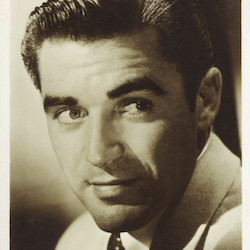
The Chase (1946) opens with a broke ex-serviceman finding a lost wallet, plump with cash and bearing the name and address of its owner, Eddie Roman. Being an honest guy—or, as Roman’s sidekick puts it, a “silly law-abiding jerk”—the vet goes to return it. As though wandering into an opium trance, he enters a classical-rococo-tropical mansion, a fantasy of vulgar magnificence. The front door is bedecked with cherubs’ heads (one of which swivels to reveal a peep-hole framing the unmistakable eye of Peter Lorre). The dazzling white interior is cluttered with marble statuary on pillars, crystal chandeliers, antique chairs, banana trees, all slashed by thin bars of sunlight falling through white shutters.
Eddie Roman, a Miami gangster, is at home amid this surreal decadence. We first see him sitting regally in a barber’s chair, crowned with a pearl-grey homburg, intently studying his pencil-thin mustache in a hand-mirror. He has reason to look pleased as he contemplates his handsome face, its square-jawed and thick-browed swarthiness lightened by limpid eyes and a deceptively sweet smile. Absorbed in admiring his appearance, he pays no attention to the girl kneeling at his side giving him a manicure, until her file slips and nicks his finger. “I’m sorry, Mr. Roman, you moved,” the frightened girl gasps. “Yeah, but you didn’t—fast enough,” he replies, knocking her to the ground with a casual blow.
With a different actor, this whole set-up—the flamboyant interior decoration, the classical allusions, the dandified sadism, the ever-present sidekick played by Peter Lorre—might come across as heavily lavender-tinted. But Eddie Roman is Steve Cochran, who plays it straight in more ways than one. Cochran grew up in Wyoming and had worked as a cowboy before trying his hand at acting, but Hollywood took one look at his oily black hair and arrogant poise and pigeonholed him as a mobster. He took to the role with a patented brand of velvety menace, concluding that the way to play heavies was to assume that his characters had done nothing wrong, as they themselves would no doubt believe. Not for him the noir torments of guilt or anxiety or haunted memory. His gangsters were slick and unfeeling, and when he came to play deeper roles in films like Tomorrow is Another Day, Private Hell 36, and Il Grido, he plumbed the specific melancholy of men whose inchoate vulnerability is forced through the conventional expressions of machismo.
He was born Robert Alexander Cochran in 1917 and adopted the name Steve while acting in stock. (It suits him, perhaps for the same reason Lauren Bacall assigns it to Bogart’s Harry Morgan in To Have and Have Not, giving it a distinctive inflection that conveys, “You’re an overconfident jerk—if only I didn’t find you so attractive.”) Cochran left college and headed to Hollywood convinced he could be a movie star, but despite his looks and confidence he was no overnight success; it took seven years of provincial theater (including Shakespeare in Carmel) before he finally scored a contract with Goldwyn in 1945. The Chase was his first decent break, after a series of small parts in Boston Blackie programmers and Danny Kaye vehicles.

Directed by Arthur Ripley and gorgeously shot by Franz Planer, The Chase is a baroquely convoluted adaptation of Cornell Woolrich’s The Black Path of Fear. The centerpiece is an extended dream sequence that eschews the usual cinematic clichés but unsettles through jarring plot discontinuities; a maze of dark, disorienting spaces; and inexplicable poetic images like the woman weeping at a table bearing the half-eaten carcass of a watermelon, like something out of a 17th century Spanish painting. The film’s seemingly normal hero (the ex-serviceman, played by Robert Cummings) turns out to have a fragile mind prone to sudden white-outs. He’s almost as passive as Eddie Roman’s imprisoned wife (Michèle Morgan), who drifts around the mansion in draped Grecian gowns and a fog of hopeless terror. What she’s terrified of is her husband, and Cochran makes you believe that Roman is capable of even worse cruelty than anything we see him do. The calmer he is the more anxiously we wait for his outbursts of violence. His light voice, sweet smile, and hypnotic stillness create a deliciously sinister effect. Here and elsewhere, there’s something about the way Cochran’s hazel eyes catch the light, with a gleam that can register as tenderness or threat. It’s hard to pin down this luster, and that’s one of the best assets a movie star can have—some small thing that can’t be explained.
Though the bulk of his work was in B movies, Cochran appeared very briefly in Goldwyn’s great triumph, The Best Years of Our Lives (1946). Near the end of the movie, the beleaguered former airforce captain played by Dana Andrews—an intelligent, serious man stymied by a bad marriage and a humiliating job as a soda jerk—walks into his apartment to find another man lounging around in his shirtsleeves. It takes only moments to register the kind of heel he is: a self-satisfied, flashily handsome guy in a loud pinstripe suit, smoking and chewing gum and condescending to his married girlfriend’s husband. It’s his job to embody the crass, unscrupulous side of postwar life, the veterans who aren’t haunted by what they’ve seen, the operators who see money “lying around” for the taking. Cochran nails the type in under five minutes of screen time.

Virginia Mayo plays the wife he’s fooling around with, and they were paired frequently in the late forties, both typed as low-class, sexy but vulgar. They’re forgettable in A Song is Born (1948), Howard Hawks’s lifeless musical remake of Ball of Fire, but wonderful as a pair of greedy, backstabbing lovers in Raoul Walsh’s White Heat (1949). Cochran is “Big” Ed, a discontented second-banana to Cody Jarrett (James Cagney), who taunts him with sneering air quotes around his moniker. Cagney’s majestically psychotic performance fills the movie like a bellows, as he crumples inward under the pressure of his migraines and then explodes in gleeful violence. Big Ed is his opposite, cool and smooth, his stolid repose off-setting Cody’s trip-wire sensitivity. Cochran looks fantastic in a dark suit with a black shirt and light tie, and his best moments are tiny touches like the way he loudly spits out his gum before kissing Mayo, or blows smoke sideways in a beautifully nasty, smirking close-up as he quietly threatens to tell Cody who killed his mother if she walks out on him. If Cagney is white heat, Cochran is black ice.
He played a variation on Big Ed the next year in The Damned Don’t Cry (1950), one of those fun, full-throttle Joan Crawford vehicles that follows a woman as she claws her way out of dreary poverty, attains a pinnacle of penthouse luxury, and plunges from there into the abyss. Starting in the Texas oil fields, she winds up as the mistress of a racket boss (the terrifying David Brian), who sends her on a mission to spy on one of his regional under-bosses, whom he suspects of plotting to take over. That would be Cochran, who is not satisfied with the desert fiefdom where he lounges around swimming pools in white terry-cloth robes and saunters around nightclubs in loud sport jackets. He’s not a bad guy here, especially compared with Brian, but he remains devoted to the one Big Ed calls, “a very good friend—me.”
Cochran’s philosophy of playing heavies as though they were blameless did not mean he tried to make them sympathetic; indeed, it’s the utter remorselessness of his bad guys that makes them so bad. Still, it can be hard not to root for him in formulaic “crime does not pay” flicks like Highway 301 (1950), which opens with not one but three state governors solemnly addressing the camera, and then smothers all the action with heavy-handed voice-over. It’s tempting to just turn the sound off, because the film looks terrific, darkly glistening with rain-wet streets, sleek curves of forties cars, the matte sheen of good suits and perfect fedoras. Cochran, as the leader of a heist mob, wears an arrogant sneer as stylishly as his overcoat. When his girlfriend whines about feeling bored and neglected, he says coldly, “Why don’t you do something about your face? That ought to keep you busy for a few hours.”
He took a break from suave gangsters to play a cowardly redneck lout in Storm Warning (1950), an “exposé” of the Ku Klux Klan that proves nothing is more pusillanimous than Hollywood when it thinks it’s being courageous. Cochran cited the role as a favorite; he recalled being terrified by Klan demonstrations as a child and spoke of wanting to show how “shabby” they really were, of his pride at striking a small blow for racial tolerance. He was clearly sincere, and he later attended the 1963 March on Washington with fellow progressives like Marlon Brando; unfortunately, Storm Warning makes no mention whatever of the Klan’s attitudes towards blacks or Jews, depicting it as merely a racket to extort money from gullible hicks.
The film is further compromised by shameless plagiarism of A Streetcar Named Desire, with Ginger Rogers visiting her pregnant sister (Doris Day), who dotes on her crass but hunky working-class husband. Cochran, wearing a white t-shirt and sucking on a bottle of beer, lays on the dumb rube act a little thick, though at least he does not come off as a Brando impersonator. After a beautifully filmed opening in which Rogers witnesses a Klan killing in the deserted streets of a Southern backwater, and a powerful scene in which she is bullied into lying under oath about what she saw, the film turns luridly exploitative. Rogers is spied on and assaulted by her drunken brother-in-law, then publicly whipped at a Klan rally. This pushes the film’s wrong-headedness to absurdity: the culmination of the Klan’s evil is an attack on a beautiful blonde white woman.
In the 1950s, Cochran got tired of playing heavies and biting the dust in every movie; unhappy at Warner Brothers, he left in 1952 to form his own production company, producing a few change-of-pace films like Come Next Spring. But one of his very best roles came at Warners in Tomorrow is Another Day (1951), an unusually subtle and character-focused B noir directed by Felix Feist. Here he sheds his usual self-assurance to play a rough, unfinished man, drastically inexperienced and socially awkward—and does it beautifully. His character, Bill Clark, was sent to prison at age 14 for the murder of his abusive father. Released at 31, he’s a child in a man’s body, touchingly naïve but also insecure and truculent, readily falling back on violence.
Like Rip Van Winkle waking to an unfamiliar world, he wanders around town in a cheap, unfashionable suit, carrying his few belongings in a cardboard box. He’s drawn first to the new cars, studying one with boyish wonder; then to girls, hesitantly trying to follow one in the street. His uncertainty and sulky defensiveness are painfully exposed, whether he’s being teased for ordering three pieces of pie in a diner, or stumbling sheepishly into the dime-a-dance Dreamland, where ten cents buys sixty seconds of feminine company. Here he is easy pickings for Kay (Ruth Roman), a gorgeous, hard-shelled bottle blonde who demands trinkets in exchange for her time. When he obediently returns with a wrist-watch, she rewards him with a peck on the cheek and a “Thanks, Jim.” Still smitten, he shyly kisses her hand, and on learning she doesn’t get off work for hours, mutters, “I’m used to waitin’.”
When Bill and Kay are mixed up in a killing, he panics, knowing that with his record he’s a “dead pigeon.” They go on the lam, but their route takes them far from the usual lovers-on-the-run formulas. Without a car of their own, they sneak into one of the vehicles being towed on a tractor-trailer, hop freight trains, and hitch a ride with a Joad-like family on their way to a lettuce-picking camp in Salinas. They start out hostile and bickering, and when Bill proposes in a motel room he does so by handing her a ring and saying churlishly, “Pawnbroker gave me a good deal.” But though he implies that marriage is a sacrifice to necessity, the truth is that he desperately wants her and has decided this is the only way he can get her. In the scene that follows, as they lounge on a bank above the railroad tracks, he tells her about the murder of his father and about his years in jail, where he earned ten cents a day as a welder. “You worked a whole day,” she says wonderingly, “Just to dance a minute at Dreamland.”
Bill asks his bride if she thinks people change, “I mean, inside.” She does: dying her hair back to brunette, switching her name to Kathy, she emerges from her cynical shell. But Bill never seems to change; in the end, when he’s betrayed by a friend and threatened with going back to jail, he reacts with blind anger and panicked violence. This incorrigibility coexists with his gentleness: when Kathy tells him she’s pregnant, his sullen face delicately opens into an angelic smile, but not long after she has to shoot him to stop him from killing the sheriff who comes to arrest him. The ending of the movie is a cop-out, but the revelation that the whole saga has been driven by mistakes, lies, and misunderstandings has a certain fitting irony.
Cochran drew even more deeply on this strain of confusion and sorrow in Antonioni’s Il Grido (1957), another movie about life on the road. The title translates as “The Cry,” and the film is essentially one long, muted howl of loss. Dubbed in Italian, Cochran plays Aldo, a simple working man who has lived for years in a common law marriage with Irma (Alida Valli), with whom he has a daughter, Rosina (Mirna Girardi). The movie opens as Irma, without warning or explanation, tells Aldo she’s leaving him for another man.
Like Bill Clark, Aldo is a muddled mixture of gentleness and violence, an aching wound papered over with inarticulate masculine pride. His reaction to Irma’s rejection is baffled and ineffectual; his instinct is to lash out, but he pulls back from hitting her. Later, desperate to assert his authority, he beats her in front of a crowd of townsfolk, but it’s he who comes away looking weak and defeated, having now sealed their estrangement. Taking their daughter, he sets out on an aimless journey, a futile search to replace what he’s lost.

The real star of Il Grido is the wintry landscape of the Po Valley. Nothing could be further from the Italy of vacation fantasies than this grey, muddy, industrial wasteland. Thin, bare branches are traced on the fog, sprouting from pollarded trees like amputees’ stumps. Desolate fields of rocks, marshes, and flat sodden riverbanks are made even bleaker by factories and construction sites, gas stations and refineries. The relentlessly overcast, drizzly weather is like an expression of Aldo’s numb, mournful mood. Cochran’s face, beginning to look worn, blends in with the landscape; he’s still ruggedly handsome, but stripped of all glamour and self-assurance, an ordinary man suddenly adrift with no bearings.
Aldo is hardly a model father, as he subjects his little girl to a tough and lonely life on the road, but there are moments when he comforts her with heartbreaking tenderness, and you always feel that in his fumbling way he is doing his best for her. (Still, it’s a relief when he finally sends her back to her mother.) The structure of this episodic film comes from Aldo’s encounters with three different women, each a possible but ultimately inadequate substitute for Irma. A former girlfriend (played by Betsy Blair) and a sexy young widow who runs an isolated service station both offer him refuge, and he has a torrid affair with the widow, but both times he drifts away. He has the chance to go to Venezuela, but inexplicably tears up his papers. He winds up with a prostitute who suffers from malaria, huddling in a leaky hut made of reeds and filled with acrid smoke. Amid this wretchedness, he remembers visiting a museum with Irma, a poignant revelation of what she represents in his barren and messy world.
He is inconsolable, and the life and purpose just drain out of him, leaving him an empty husk. In the end, Aldo returns to the town he left, to find it roiling with mass meetings over land seizures, a chaos of bulldozers, ruins, blazing fields and armed police. But for Aldo, the last straw is seeing, through a window, Irma with her new baby, annihilating his hopes. It’s hard to think of another movie in which someone essentially, and convincingly, dies of love.
Steve Cochran had a great deal of practice at dying; having succumbed onscreen to many predictable violent ends, he topped them in 1965 with one of Hollywood’s most legendarily bizarre deaths. That he was only 48 is tragic, but that he died aboard a yacht with an all-female crew is irresistibly titillating. None of the young Mexican women (whom he had hired, allegedly with a view to making a movie about a real yacht captain who had an “all-girl” crew) knew how to pilot the boat, which drifted for ten days off the coast of Guatemala after Cochran unexpectedly fell ill and died of a respiratory ailment. This story left a somewhat lurid stain on his life, though it seems to have been nothing but a publicity stunt gone terribly awry.

Alas, Cochran’s off-screen behavior rarely enhanced his reputation for seriousness. He seems to have been amiable and well-meaning, and neither his chronic womanizing nor his penchant for reckless driving and flying were anything out of the ordinary in Hollywood. More damningly, Don Siegel claimed he had trouble catching Cochran “even slightly sober” during the filming of Private Hell 36 (1954), though you’d never guess this from his sharp, nuanced performance as a corrupt cop in love with a nightclub singer (Ida Lupino, who co-wrote the script). His character, Cal Bruner, is callous, vain, and morally shifty—a plainclothes dick who tackles and fatally shoots a robber, then readies himself for a date with perfumed aftershave while complaining that the “miserable creep” ruined his new suit. He’s a guy on the make, lightly detached from everything except his own concerns. Yet when Cal falls for Lily, a canary with an exhausted voice and bone-dry sense of humor, he becomes someone we care about. He has better taste than we would have expected (Lily—who seems older than Cal, though Lupino was a year younger than Cochran—is no brainless babe), and more substance.
“You know, somewhere in my dim past I seem to have heard this before,” Lily deadpans when Cal makes a pass. “I’ve said it before,” he replies readily, “To all shapes and sizes. Only this time I mean it. Don’t ask me why.” Cochran and Lupino have serious chemistry (the scene where he unties the halter neck of her dress and massages her naked shoulders is a classic of Code-era steaminess), but Cal and Lily also connect on some deeper level, making us believe these two what’s-in-it-for-me types surprise themselves with genuine feeling. When he sits at the bar watching her croak out a hard-hearted ditty called “Didn’t You Know,” his eyes brim with a clear, soft light. In this part, Cochran layers cool selfishness and tender warmth so closely, nothing thicker than a razor could separate them.
by Imogen Sara Smith
13 notes
·
View notes
Text
The Pandorica Opens - Doctor Who blog
(SPOILER WARNING: The following is an in-depth critical analysis. If you haven’t seen this episode yet, you may want to before reading this review)

New Who doesn’t exactly have a good track record when it comes to its series finales. Russell T Davies had a horrid tendency to make his finales bombastic, gaudy slushfests that usually had high stakes but very little impact. How does Moffat compare with his first of a two part finale?
Well The Pandorica Opens is a nice, welcome change of pace. Instead of this grand, epic narrative, Moffat keeps everything very small and compact. Yes there are 12,000 spaceships in the sky, but the story is mostly contained within the caverns beneath Stonehenge. The only real threat comes from a lone Cybersuit trying to assimilate a new human host, and that was fantastic. A creative use of Cyber lore that was very reminiscent of a John Carpenter movie. Love it. There also seems to be much more emphasis on characters rather than spectacle, specifically on Amy and Rory.
Oh yeah, Rory is back. Like I said previously, I knew even at the time that Rory wasn’t really dead, but fair’s fair. I wasn’t expecting him to come back as a Roman centurion (I do have issues with this, but I’ll come to that later). A big chunk of the episode is dedicated to Amy and Rory reuniting and Amy not remembering him. Both Karen Gillan and Arthur Darvill are incredible together, selling the intense emotions their characters are feeling like its going out of season. The ending in particular was both shocking and moving as Rory cradles Amy’s body after he accidentally shoots her.
Matt Smith is also great. The obnoxious weirdness has thankfully been toned down a bit after The Lodger and there are a number of good moments. My favourite being the sequence with the Cyberman arm, but the scene where the Doctor comedically realises that Rory has implausibly returned from oblivion is a close second for me just because it could have been so easy to have fucked that up and made it feel awkward and forced, but Matt Smith pulls it out of the bag. Alex Kingston also does a good job as a mercifully less smug River Song. Okay the Cleopatra scene was incredibly cringeworthy, but her ‘you’re all barbarians now’ speech to the Romans more than made up for it.
If you’re after decent characterisation and good performances, then The Pandorica Opens should be more than satisfactory. If however you’re looking for a good story to go with it, you’re going to be disappointed because this is where the episode falls flat on its face.
Let’s start with the Pandorica. What is it? It’s a prison. The most powerful prison ever constructed with deadlock seals and time locks and so on to contain whatever’s inside... and is incredibly easy to open.
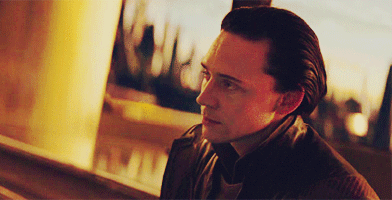
But who or what is inside the Pandorica? Well according to legend it’s some kind of goblin/trickster/warrior. The most feared being in all the cosmos.
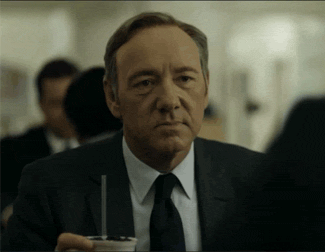
Well gee, I wonder who this could be referring to. I mean it could be anybody. No, but seriously. It’s definitely Omega. (Just out of curiosity, the people who came up with this theory, were you just humouring Moffat or were you really that thick?)
Yes, obviously there’s nothing inside the Pandorica because obviously it’s meant to be for the Doctor. Not exactly a shocking twist, is it? A demented cabbage could have worked that one out what with the painfully obvious hints. But what makes this twist even more annoying is the fact that it doesn’t make even the slightest bit of sense.
So the Pandorica was created by an Alliance of the Doctor’s greatest enemies.

Remember back in Doomsday when the Daleks and Cybermen fought each other? Yeah I didn’t like it either, but Russell T Davies got one thing right. The Daleks and Cybermen would never work together because of their totally opposing ideologies. Daleks are driven by xenophobia and hatred, whereas Cybermen are driven by a desire to ‘save’ humanity. Daleks want to kill and conquer. Cybermen want to fix and improve. Now you’re expecting me to believe that these two polar opposite Who baddies can not only put their differences aside, but are also willing to work with Sontarans, Sycorax, Judoon, Slitheen, Draconians, Autons, Zygons, Silurians... wait! What the fuck are the Silurians doing there?! Why don’t you just throw in the Ood too and be done with it?!
Then there’s the question of why they’re building this Pandorica in the first place, even going to the trouble of visiting Amy’s house and extrapolating memories of Romans and shit. They believe the Doctor is going to destroy the whole of space and time. I get that (actually I don’t, but I’ll come to that), but if that’s the case, wouldn’t it be easier to just kill him? Why are you going to such ridiculous lengths to capture him when you can just blow him up WITH YOUR 12,000 SPACESHIPS?!!!
And why do you have 12,000 spaceships anyway? It only takes a couple of plastic Romans to shove the Doctor inside the Pandorica. Seems a bit like overkill to me.
Also what’s the point of the transmitter? The Pandorica transmits a message to everyone from the Daleks to the Zygons to even Vincent Van Gogh. The message beams across all of time and space. Everybody hears it... except the one person they’re trying to lure to the Pandorica in the first place.

The only reason the Doctor shows up is because River Song defaces an ancient cliff-face. If Van Gogh’s painting was never discovered, the Doctor would never have showed up at Stonehenge to be locked up, would he? Who the fuck came up with this plan? Mr. Bean?
But the stupidest thing of all is that despite the Alliance having the resources to visit Amy’s house, extrapolate memories, create plastic Romans and build a perfect prison based on a children’s picture book, not one of them has the brainpower to work out that the Doctor isn’t the only one that can fly the TARDIS.
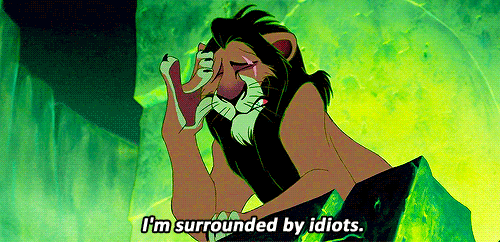
Epic fail for the villains, and I wish I could say that’s the end of it, but it gets worse. Let’s talk about Moffat’s crack.
We know how the cracks in time work, right? If the light touches you, you get erased from existence. You don’t just die. You were never born in the first place. Those are the rules. Well, like with the Angels in Flesh And Stone, Moffat once again breaks his own rules for plot convenience. Turns out you’re not completely erased from existence after all. You leave traces behind. Like an engagement ring or a photograph. How can either of those exist if Rory doesn’t exist? Fucked if I know! Also, apparently if you can remember someone, they can magically come back. So how come those soldiers from Flesh And Stone didn’t miraculously return when Amy remembered them? Because Moffat is a shit writer. That’s why. What’s the point of getting invested in a story if the writer just keeps changing the rules whenever he feels like it?
Also I expect you’re wondering how the Alliance were able to recreate a plastic Rory with all his memories from a single photograph despite the fact he never existed. Well apparently... he’s a miracle.
No. Really. You heard that right. According to the Doctor, there are some impossible things in the universe that cannot be explained, and we call them miracles.
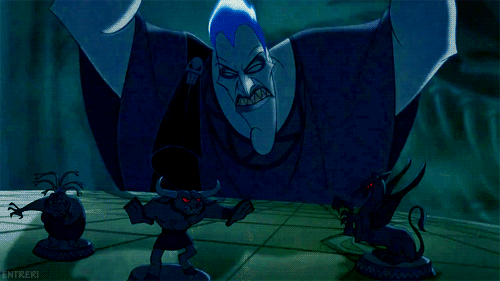
I know that Moffat said in an interview once that he’s always seen Doctor Who as a fairytale, but this is taking the piss. You can allude to fairytales, sure. Borrow elements and draw parallels, but at the end of the day Doctor Who is a sci-fi show. If you use actual fairytale solutions to solve sci-fi problems, you’re just cheating the audience and making us question what the fuck is going on.
Somewhere underneath this convoluted mess is an emotional character piece trying to get out. Unfortunately it’s hampered by a writer being too clever for his own good.
#the pandorica opens#steven moffat#doctor who#eleventh doctor#matt smith#amy pond#karen gillan#rory williams#arthur darvill#river song#alex kingston#bbc#review#spoilers
30 notes
·
View notes
Text
“A great night of fights with two potentially so-so headliners” UFC Fight Night From Brazil Preview
Joey
October 25th
After a very solid afternoon tilt, the UFC is back on the road and back in international waters with a show from Brazil! The wonderful 2nd home of the UFC has seen quite a fall from grace in recent memory as there is ONE current Brazilian champion after running the sport from 2012 to 2014 and for once, there doesn't seem to be a wealth of options out on the bench ready to step up and hit a home run. Now having said that, this card is VERY good with a collection of established names you're familiar with, newbies with high promise, some under 30 or so fighters who have been honing their crafts on undercards and best of all some absolutely perfect matchmaking to back it all up. It's gonna be worth your time so let's see what a Brazilian Fight Night brings to the table on a very busy Saturday slate of action.
Fights: 12
Debuts: 1 (Marcelo Golm)
Fight Changes/Injury Cancellations: 4 (Carlos Felipe OUT, Marcelo Golm IN vs Christian Colombo/Augsto Mendes OUT, Raoni Barcelos IN vs Boston Salmon/Boston Salmon vs Raoni Barcelos CANCELLED/Luan Chagas OUT, Vicente Luque IN vs Niko Price)
Headliners (fighters who have either main evented or co-main evented shows in the UFC): 5 (Lyoto Machida, Derek Brunson, John Lineker, Demian Maia, Jim Miller)
Fighters On Losing Streaks in the UFC: 3 (Jim Miller, Lyoto Machida, Hacran Dias)
Fighters On Winning Streaks in the UFC: 9 (Colby Covington, Marlon Vera, Rob Font, Pedro Munoz, Jack Hermansson, Thiago Marreta Santos, Niko Price, Antonio Carlos Junior, Elizeu Zaleski)
Stat Monitor for 2017:
Debuting Fighters (Current number: 32-29)- Marcelo Golm
Short Notice Fighters (Current number: 17-31-1)- Marclo Golm, Vicente Luque
Second Fight (Current number: 23-33)- Jarrod Brooks, Devieson Figuerido
Cage Corrosion (16-9-1)- Lyoto Machida, Hacran Dias
Twelve Precarious Ponderings
1- So what does Lyoto Machida even have left at this point? Machida's run at 185 lbs has been interesting to say the least. His resume at 205 lbs is tremendous with wins over Rashad Evans, Dan Henderson, Tito Ortiz, Rich Franklin (forgive me if that was at 185 lbs), Ryan Bader, Randy Couture and Shogun Rua all when those meant a whole hell of a lot. His losses are to Shogun Rua, Rampage Jackson and Jon Jones. He made the decision to dwell at 185 lbs in 2014 and thus far the results haven't been as sparkling. Obviously nobody should shun wins over guys like Gegard Mousasi and CB Dollaway but his losses at the weight class have been pretty burtal to bear witness to. He made a valiant effort with a late rally vs Chris Weidman but against Yoel Romero, he was absolutely run over and against Luke Rockhold he was outpowered and overwhelmed. He's approaching 40, coming off a hell of a layoff and his last two fights do little to inspire confidence in him. He is, for all intents and purposes, a guy who seems washed up.
Machida will be the first real case study in how a style like his ages. You always hear that the chin and the reflexes are the first things to go and the power is the last thing. Machida is reliant, almost to an absurd degree on his timing and reflexes. Against Rockhold I can't think of a single thing he could've done differently but he always looked slow vs Yoel Romero. He seemed pensive and once a guy at his age has a tough time pulling the trigger, that's it. That's NOT something that comes back. If you lose the ability to fire, you're done. In his prime, Brunson would've been a style that Machida would crunch up on. A big power so-so cardio wrestler who isn't going to give you a lot to worry about. Machida used to LIVE for those "tough in the first round" types because he'd just pick them off from the outside, wait until they slow down and then blitz and finish them. If Brunson gets him then I have no idea what to say anymore.
2- Who will have the cardio edge in the championship rounds? Machida's never been cardio deficient but he IS going to be 40. Brunson is good early, rougher late and has a style that's not conducive to long fights. A lot of quick hitter explosion on the feet and grinding wrestling late. Might not be a great matchup.
3- The Tough Dad's Division is up in the air but I think I've figured out the key to succeeding as a Tough Dad: Be Available.
From Derek Brunson's fight vs Uriah Hall in September of 2016 to now, this will be his 4th fight. So if you include the Uriah Hall fight, he's fought five times in 13 months. Let's comp that with "the elites" of the division:
September 16 to October 2017 you have Yoel Romero fighting twice, Robert Whittaker fighting a remarkable three times, Jacare twice, Luke Rochold gracing us with his presence ONCE, Michael Bisping also has just ONE appearance and Chris Weidman has fought three times. Your ability as a middleweight and light heavyweight is your availability I suppose. It's why Tim Boetsch survives in MMA, it's why Sam Alvey will forever have a gig and why Uriah Hall never slumps TOO much. Guys who fight often can eliminate wins and losses a lot quicker. There's a skill and strength to being active so kudos to Brunson for figuring this thing out.
4- Is Demian Maia vs Colby Covington the UFC's way of just taking two problems and hoping they cancel each other out? Like I can't see this fight being exciting in any way really.
5- It's somewhat hidden on a very good card BUT gimme that fight with Jim Miller and Francisco Trinaldo. Massaranduba built up a really great 155 lb streak and it came to a screeching halt when Kevin Lee outlasted him after a hectic first and subbed him in the second round. Jim Miller is sort of in the midst of a career renaissance or at the very least, he's taken great strides in re-establishing himself as a total all action psychopath in the cage. Even when he's athletically outmatched, he seems to always make those fights his own.
6- Pedro Munhoz vs Rob Font is SUCH an impressive fight on paper primarily because it returns Font to the scene of his greatest disappointment. Against John Lineker, Font looked SO overwhelmed from the size of the crowd to the volume to the actual opponent. He didn't fight up to the situation and even if you don't beat a guy like John Lineker, there are ways to impress in a loss. He didn't impress and while Lineker and Munhoz are not even on the same universe in terms of styles and reputation, Munoz is a fantastic 135 lber. This is a very cool fight with a shot at redemption for Rob Font.
7- They have different ways of going about it but both Marlon "Chito" Vera and John Lineker share a common trait for success; they are never ever out of a fight. Lineker's power and his march ahead brawler style make him a threat to anybody. Chito Vera's grappling, length and power in his own right makes him a scary fighter for any opponent. He's long, freakishly athletic and fights like he doesn't know any better. This is another great fight at 135 lbs.
8- If you have FS2 then you're in for a Jim Dandy because the FS2 prelim slate is really, really good. From a battle of good MWs with two clashing styles in Antonio Carlos Jr and all action Jack Marshmann to Elizeu Zaleski vs Max Griffin in what should be a "let 'em fly" slugfest to the return of Niko Price vs competent WW Vicente Luque, you got plenty to dig in and digest.
9- Speaking of Zaleski, I feel like his upside is muted by fans sometimes. Why can't this guy fight in the top 10 of the division? His wins are over Keita Nakamura, Omari Akhmedov and Lyman Good. If you follow beyond the main cards, that's really solid competition and his one loss was to Nicholas Dalby in a fight I was SURE he won. He's all action, he has tremendous cardio, fights at an unrelenting pace and MELTS people with his power and his cardio. If his wrestling improves a smidge, he can beat guys in the top 10.
11- Thiago Santos is all action all of the time....but I have questions about his ability to deal with aggressive wrestlers. There are some things that Jack Marshmann does very well and one of those is pressure and rely on his ground and pound. I don't know if that's a good style for Marreta BUT we shall see if he cracks him first.
12- The UFC's problem in the United State is that fight fans want to see their old guys and dont care about new names. In Brazil, the problem is that the old guys keep losing but they have zero young guys to replace them. The youngest Brazilians on this card? 27 year old John Lineker, 27 year old Antonio Carlos Junior and 25 year old Vicente Luque. Good fighters but almost all have ceilings which will limit their growth going forward. Not overly exciting.
Must wins
1- Derek Brunson
Lyoto Machida is in a very specific group of people who will leave the UFC under their own terms. He's got a job quite possibly for life as a former champion who fights at two weight classes of need PLUS he's Brazilian. He'll be here until he decides he doesn't wanna be here. For Derek Brunson, he's approaching 35 and every big fight he's taken he's lost. Now granted, he made a great showing vs Yoel Romero, probably beat Anderson Silva and had Robert Whittaker hurting. Ifs and buts as they say. He's facing a near 40 Lyoto Machida coming off a long layoff. He HAS to win this or else his availability will only guarantee an existence outside the top 10.
2- Colby Covington
I mean....duh? Covington is trying to be the guy who uses social media to build his profile and get people excited about him. That's AWESOME except his social media ramblings are quite weird. He's an acquired taste and the same can go for his more boring meat and potatoes style which is a throwback to the Matt Hughes era of wrestling and ground and pound above all else. He vs Maia is a case of two negatives being asked to produce a positive and if he does that AND if he wins then the sky may be the limit for him.
3- Antonio Carlos Jr
Antonio Carlos Jr is high upside and an amusing fun style of grappling combined with youth and desperation. The UFC needs a new Brazilian face and Shoeface, ironically enough, could just be that guy. He's a name to keep an eye on even if his hype is just desperation. The HW turned LHW turned MW draws a winnable fight in Jack Marshmann; a sophisicated brawler type who feasts on pressure but is hittable and beatable in any facet of the game. He's a sum of his parts kind of guy. Shoeface needs to win this one because it's a stylistic giftwrapped type opponent at home no less.
5 notes
·
View notes
Text
Best of DC: Week of August 28th, 2019
Best of this Week: Batman: Curse of the White Knight #2 - Sean Murphy, Matt Hollingsworth and AndWorld Design
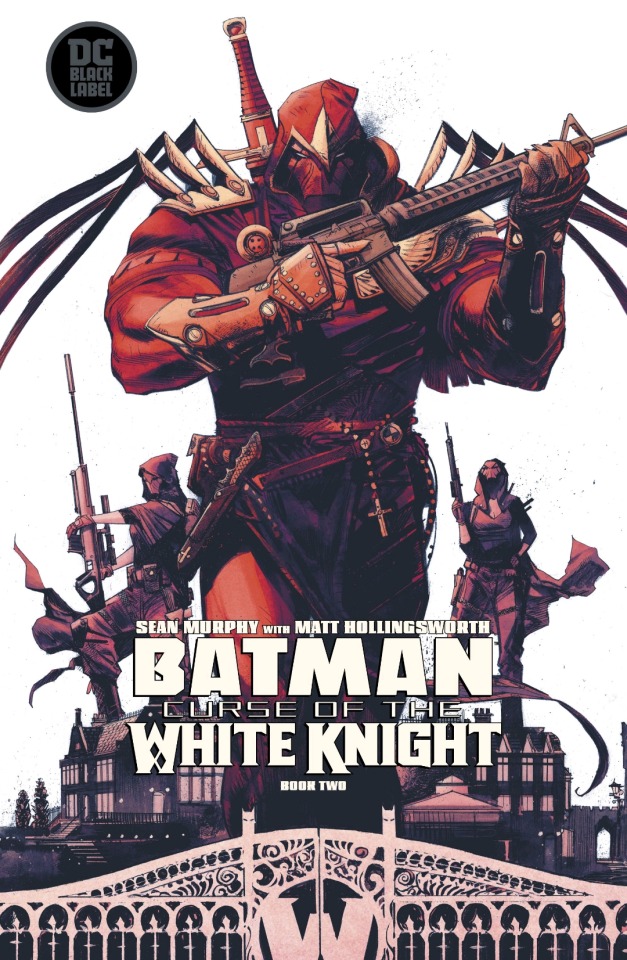
Sean Murphy smashes it yet again.
In the original White Knight story, Joker somehow managed to acquire pills that returned him to a state of normalcy. Under the name of Jack Napier, he sought to expose Batman for the threat to Gotham that he was slowly becoming after his continuing and escalating efforts to capture the maniacal Joker and the various, horrible beatings that he gave the villain. Napier vowed to clean the streets of Gotham and just before he returned back to his Joker state, he was able to see Commissioner Gordon and Batman come to terms with the harsh truths of Batman’s activities. Batman is set free and strove to be better for Gotham and Gordon began to run for mayor.
But things weren’t meant to last.
The Joker returned to his villainous state and instead of being an obsessed madman bent on getting Batman to acknowledge him, he wants to tear down every good thing that was left in Napier's wake; The Napier Initiative, The GTO and especially Batman. With his goals in mind, he uncover the ancient history of Gotham and sets forth a task for a former Soldier dying of cancer and gifts this man with a Holy Sword of Fire from the Order of St. Dumas.
This issue builds upon these ideas as Joker and Ruth, a representative of The Elites of Gotham, set out to either corral Bruce or destroy him. Ruth tries to appeal to any sense of family honor and wealth that Batman has and tells him that she knows who he is. She warns that if he were to reveal his identity and go through with the Napier Initiative then Wayne Enterprises stock would free fall, thousands of employees would lose their jobs, Dick and Barbara would be arrested along with Bruce for their actions and no one would win.
Bruce, steadfast as ever, vows that they will be exposed and Gotham will be made safe again. What's great and terrible about this is that Batman thinks he doing what's best for Gotham, but much like in the past he's not thinking of the greater consequences of his actions and who will be hurt in the long run. It seems as though the Wayne's act in a cyclical manner, feeling as though Gotham is theirs to control and decide what to do with if the beginning pages of this book are anything to go by.
Soon after, Gordon makes his first speech about throwing his hat into the mayoral race. Unfortunately he's interrupted by The Joker who reveals Batgirl's identity to the crowd of a few hundred as he's taken down by Gordon. The first of many dominoes fo fall as this reveal shatters his newly fixed relationship with Batman. Barb's life is absolutely ruined by this, though we're not given any immediate fallout. Elsewhere Ruth activates her Plan B, Azrael.
Jean-Paul Valley sees his mission of wresting control of Gotham from Bruce Wayne as his last act in the will of God before Cancer takes him. To him, this is a Holy Quest as the Wayne's stole Gotham from the Order of St. Dumas, so not only has he taken up the sword, but the crimson armor of Azrael and he will destroy Batman.
Sean Murphy's Azrael design is a work of art. It mixes the feel of a ninja/priest badass with the tactical armaments of the modern day. I love just how perfect the reds of the costume are with their golden accents and accessories. Azrael looks Godly and threatening to no end. Murphy's stylish art makes even a still shot of the man look like something he's the biggest threat that Batman could ever face.
In all honesty, he is. After he's activated he goes after batman in the worst way. In the best pages of the book, Azrael takes over the Batcave controls and turns them on Batman. Murphy puts Batman through the ringer, dodging Batmobile gunfire, a falling Batwing and a spreading fire in the cave. Hollingsworth coats these pages in a reddish orange as Murphy's art moves in a fluid manner with Batman using all of his skills to avoid death. In one fantastic double page spread, he retakes control of the Batmobile and whips it on two wheels to avoid the falling Dinosaur before escaping.
As Wayne Manor is set ablaze, Azrael and his crew drive away through the darkness.
This book was phenomenal from front to back. Thematically, it was on point with how the past can come back to haunt you as there are many parallels between the Wayne's past and the future. Bruce's ancestor, Edmond Wayne, betrays the man who saved him when he asks for half of Gotham as payment. Azrael sees this past act as something that needs to be rectified. Alternatively, Bruce is also repeating his own mistakes that ultimately lead to more destruction.
Sean Murphy has always been an amazing artist, but he turned it up to 11 here with amazing visuals, fantastic hatch shading (my favorite kind), dynamic action and set pieces that make me anticipate the next issue even more. Matt Hollingsworth absolutely compliments Murphy's style with colors that make the book feel fantastical, grimy and dark.
Curse of the White Knight is already shaping up to be a worthy successor to an already amazing story and if it keeps up this amazing pace, it may even outclass the original!
---------------------------------------------------
Runner Up: Freedom Fighters #8 - Robert Venditti, Eddy Barrows, Jack Herbert, Eber Ferreira, Adriano Lucas and AndWorld Design

There were many victims in the wake of Nazi Germany's rise. One commonly forgotten, the black man.
Between 1932 and 1942, black Germans were subjected to racial segregation, imprisonment for race mixing, beatings, ridicule, forced sterilization and sent to concentration camps. Those that dissented against Nazi German rule were "disappeared", never to be seen or heard from again.
We're shown that, much like we've always known, Nazis are inhumane monsters as they rip a newborn child from the arms of their parents. I think the baby is supposed to be Black Condor's father. Eddy Barrows draws heavily on their pain as we're given an up close shot of the mother screaming and the father crying. It's a hard sight to see.
This issue of Freedom Fighters focuses on Black Condor and the black laborers that are forced to work in factories in Earth-X's Detroit. Their conditions are painted as being less than favorable with long hours, exhaustion and constant hatred from the supervisors. Workers are beat for taking breaks or even seeming like they're up to something. They're also made to wear ear tags as a way to show where they're supposed to be working, like cattle.
Upon seeing the conditions again, Condor is taken back to when he was just a young boy working in the same place. He remembers his father giving him his first set of wings and telling his son to escape before the Nazis caught him. Condor steps up to defend the assaulted worker, revealing who he is.
This sparks a bit of an uprising as the other workers not that they far outnumber the Nazis watching over them. Even as Doll Woman reveals herself as a PlaSStic Man, the real Doll Woman had been kidnapped and replaced in the last issue, the workers step up and show that they are not going to stand idly by and let the Ratzis continue to run them over.
Jack Herbert's art in these last few pages are awe inspiring as Black Condor rises with the other black workers bearing their tools behind him, ready to continue fighting on. Not only does this symbol a new turn for the better, it will also strengthen Uncle Sam's own power as the Spirit of '76 gets even stronger the more people believe in the original ideas of freedom that America once stood for.
Everything starts to turn bright, where once the backgrounds were just dark, they start to lighten, complimented excellently by the blues and blacks of Condor's costume. His face is filled with the righteous rage of freedom!
Freedom Fighters is one of those series that comes every once in a while. It's action packed, tells an engaging story and focuses on the underdog and their rise. Black Condor absolutely deserved to have this spotlight shown on him and where he came from, especially since it's been hinted at from the very beginning of this book. It makes sense why he's so angry, why he's so willing to risk his life for even the idea of change.
Robert Venditti has been killing it with this book and here's to hoping that it continues on just as well! High recommend!
#comics#dc comics#dc#dc black label#batman#batman curse of the white knight#azrael#bruce wayne#jean paul valley#jim gordon#the joker#sean murphy#sean gordon murphy#matt hollingsworth#black condor#uncle sam#uncle sam and the freedom fighters#freedom fighters#nazis#earth x#robert venditti#eddy barrows#jack herbert
2 notes
·
View notes
Text
Gays Hate Techno speak non-commercial techno culture, along with a great collection to match
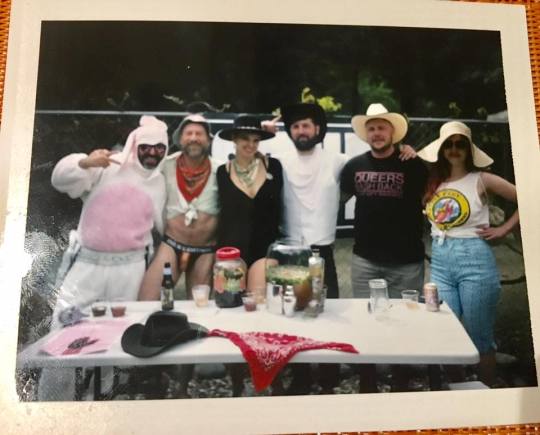
Their festivity has no wristbands. Their schedules may not be blowing up on socials. When Gays Hate Techno throws a party or does a compilation-- like the one that only lost-- what you obtain is actually nothing at all yet musical feeling.
It is actually only the type of riotous perspective that has instilled the most effective digital popular music. Given that we can not all create the event, Gays Hate Techno collections can bring you some of that sensation straight through the songs. The have quickly become must-hear occasions, and also model 4.0 is no various.

I spoke to GHT owner Matt Fisher as well as compilation developer Benjamin B. Orphanhood Eksouzian to acquire knowledge into how it all comes with each other. They deliver a confident notification for any person who seems like they're certainly not discovering community in electronic music-- as well as a template for just how to function all together to get that groove back.
Oh yeah, as well as-- due to the fact that this is actually a collection, we've obtained one thing to queue up for listening. (Do not miss the corker of a track by friend-of-the-site David Abravanel, whose popular music possesses the best wit for the task.) There's a complete megamix of the popular music (which you can easily additionally manage signing up for their podcast):
Images good behavior GHT, coming from their gathering.
Peter: I recognize this is an one-of-a-kind sort of group; can you describe just how you envision this team as well as exactly how it functions?
Matt: Gays Hate Techno isn't an industrial promoter in the standard feeling. Our company do not possess a set roster, resident DJs, or even a particular program. Our company manage around performing projects like the party and collections that assist the online area, not vice versa. During that way, the compilation and also the event possess the same objective-- they're means our company can easily ensure and also celebrate partnerships that or else exist merely or mainly online.
Peter: The individuals I recognize who have actually been to your celebrations state it is actually a definitely unique odds to follow all together. How performs the celebration event for the group?
Matt: The layout for the celebration is actually imitated revolutionary faerie parties and also Burning Man-style encampments, so it possesses goals that are actually various from, point out, an industrial music festivity. We're a reasonable slumber event created around songs, but a community-building activity. What I mean by that is that our company depend on involvement, volunteering, and impulsiveness much more than perhaps an event would. Our experts likewise try to become as cheap as feasible, as well as we keep a traveling fund that defrays costs for our females, trans, nonbinary performers and also artists of different colors.
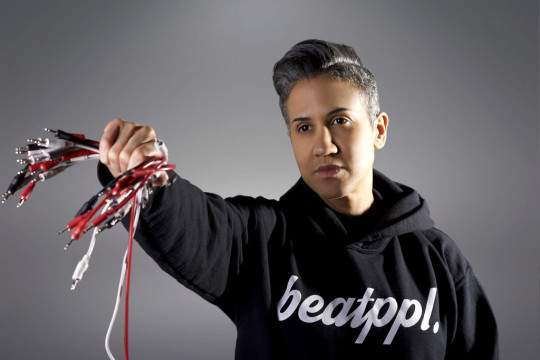
. Peter: So just how carries out the neighborhood job-- just how perform folks take part?
Matt: Anybody may and also must get involved. Our construct is actually created around helping with individual communications as high as it is actually generating a popular music sequence. Our experts have an available require artists, and also our experts leave behind room around our curated plan time for an available course for casual sets as well as tasks.
Folks volunteer to prepare dishes, aid park cars and trucks as well as assist set up phases. Our team talk to every person to give away 2 hrs of their opportunity. They additionally take fine art, perform injury decrease training, serve as our clinical staff, give massages, do yoga exercise and also reflection. Undoubtedly a celebration our dimension does not especially require 400 volunteers. The objective of the volunteering is so much more about trembling people away from viewer setting as well as providing them an excuse to create brand-new good friends while becoming part of the activity, not just portion of the target market.

I assume that the social focus triggers better functionalities, incidentally. We put together an atmosphere that produces unwinded, enthusiastic listening, and people that've permit their protectors down a little bit, and also motivate the DJs and entertainers to seek a lot more individual, farther-out tips than perhaps they normally reach check out. There's a wonderful responses loophole there. Our experts're all there as songs supporters, and as an encouraging system.
Benjamin: In conditions of the compilation process, as Matt specified above, our team see these compilations as an innovative item of the participants of Gays Hate Techno. Our intention is actually to advertise our participants' art and also to display their original work as shared through the music genre of techno.
To that side, every year (cycle) our team introduce a contact us to engage to the present members of the facebook team, e-mail calls from previous compilations, along with a Discord team for individuals who have actually determined to leave Facebook, but would like to keep hooked up to the celebration and neighborhood. Participants create each of the material-- songs, album artwork, promo video job, push launch copy, as well as in most years the audio mastering of tracks.
Our team urge volunteer work and involvement to create a compilation that shows our community. Our team require the performer to announce the work as their personal and also to confirm that it does not include samples that might offer a licensing concern. Outside of that, our company do not reject jobs from a visual critique standpoint. This year, as an example, our company had more artwork articles for the album art work than our experts can use and also made a decision to let the Facebook group vote to determine the last piece to represent Gays Hate Techno IV.

Peter: At the threat of making you discuss a joke, I must inquire-- what is actually the account along with the label?
Matt: Gays Hate Techno is actually a prank title that emerged of a conversation I had along with buddies in New York City back in 2010 or even 2011. They were managing a gathering at the Stonewall Lodge that featured techno, tech-house, as well as very little even more than what back then was regular gay male nightclub music. It was the answer to the inquiry: why's it thus hard to receive folks to follow bent on pay attention to better music?
Each of the 3 terms was indicated sarcastically, of course, along with a kind of Kathy Griffin-type odd dismissiveness. A pair of times later, I produce the Facebook team as a method for us to just debate and upload paths we liked. Individuals invited close friends, and also it quite, extremely quickly ended up being an international team. People would comment that they failed to know some other queer individuals who liked the songs folks were posting. There was a wish to link with various other folks this method.
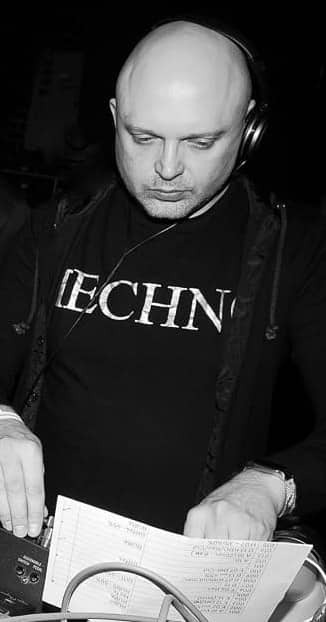
. CDM: Due to this whole workers-- I am actually attracted to call this team "Misanthropes"? Perform support the collection and this excellent area and offer it a pay attention-- as well as purchase it if you like it.
GAYS HATE TECHNO IV through Gays Hate Techno portions
a number of the background with our company regarding their track-- and also it's a necessary and also effective tale:

"i am actually recognized to become included in the 4th edition of the Gays Hate Techno compilation! my keep track of, "what they derived from me i will never come back", is actually an action in the direction of recovery. a sonic portrayal of my mindset post-trauma, and the tension it has actually placed on my interpersonal connections because of the brought upon concern as well as pain. i am an heir, yet the memory is there along with me daily i awaken, till the minutes stocking bedroom prior to i design to sleep.
because my abuse happened back house in michigan, it is vital for me to render to the queer & & trans folks certainly there without clinical support or access. detroit, and michigan typically, have actually restricted sources for LGBTQIA+ household, as well as there is no location solely for queer and also trans heirs of sex-related abuse as well as rape, which is a significant aspect when you are actually browsing this form of damage. i have actually determined that i will certainly match the sales of this record till december 18th of this year, and will certainly be donating that atop my personal addition to the Compunction Ellis Facility, an institution in detroit that supplies secure residing for homeless queer and also trans young people, help solutions, a come by health and wellness facility for wayne area homeowners that are actually medicaid eligible at no expense, and transition information for trans youth, only among others. therapy is actually type the recuperation method, as well as providing queer young people accessibility to that is critical.
i chance y' all delight in the compilation. thanks for the continuing assistance! ..."-- Jarvi Guðmundsdóttir aka Acid Father (excerpt coming from FB blog post)
Regarding the event
The post Gays Hate Techno speak non-commercial techno culture, along with a fantastic compilation to match appeared initially on CDM Create Digital Songs.
This content was originally published here.
0 notes
Text
Random Review (2)
Voltron season 4 review.
Overall this season was somewhat darker while still enjoyable, and it had many thoroughly hilarious moments. The visuals were amazing and the plant designs still managed to awe me. Fighting and the choreography of the battles were stunning and well planned. We also get some good moments from all the characters, some more than others of course.
Like my last review I will be covering:
Plot
Characters
Feels
Graphics and sound
Any extra points
And that’s about it for the spoiler free overview. I will be getting into the good stuff below.
Plot:
It’s an, interesting carry on from Season three. It kinda felt like some of the stuff we were working towards in season 3 got discarded this season. Example, last season we saw Keith struggle with becoming the leader but this season he backs out and Shiro can now piolet the black lion. However I thought the coalition plotline worked really well and had a good payoff in the finale. I perhaps would have liked to of seen more of the alien races and how they would have fought in that battle.
Episode 2 was fantastic, though it could have perhaps been shuffled around with the other episodes because matt didn’t seem to show up in episode 4. Either way it wouldn’t have changed the narrative because ep 2 is pretty self-contained.
I know we had a short screen time budget but I didn’t feel as rushed this season. Plenty happened in each episode and they stuck pretty straight to the main narrative whilst providing some good side moments. The only noticeable things that were cut out were: 1, The Blade of Mamora mission. I know Keith went out on his own mission but we never got any updates or anything from their point of view. I can understand this decision but it just means we don’t get to see Keith or how his time away from the paladins affected him. At the same time it does put us more into the other paladin’s shoes as they don’t know what’s going on with him. 2nd, We didn’t see much of Lotor and his plans but I would also put that down to the writers keeping Lotor’s motives in the dark. So it works in their favour.
But overall the writing was good and I am interested for the next season.
Characters:
I didn’t see this and anyone’s particular season but there were defiantly some highlights.
Pidge: Starting with Pidge because she is my fave. She has been working her butt off to find her brother and I’m so glad she finally did. I love her relationship with Matt and how they are both science nerds. (can relate). Also the scene where she gets mocked at school for being smart draws on similar feeling from me so it was a case of making my favourite character even more relatable. I love how her alias was actually the nickname her brother gave her. I didn’t know that before and it’s adorable. Her action scenes were great, and she makes a really good team with Matt whether it be in the science or combat department.
Matt: I was very interested to see how he would integrate with the team. Especially after Keith left. (My sister made a comment of, the reason they got rid of Keith was so Matt could replace him.) I thought episode 3 did a good job with that. I loved how Pidge, Matt and Hunk are now the nerd trio and that Matt gets to ride tandem with Pidge in the green lion. And how could I forget that Matt also fell head over heels for Allura,that was hilarious. But anyway from what I saw in the last episodes I think Matt will be hanging out with the rebels when he isn’t with the team.
Lance: Seems to be back to his usual self. I think the show business gave him a boost in confidence. Although he doesn’t flirt with Allura it’s funny to see that he still doesn’t want any other man with her. His speech to Allura in ep 6 was touching and really showcased why the blue lion picked him in the first place. It added to the side of him we saw in season 3. His ability to act as the heart of the team.
Shiro: Shiro comes back and the first thing we see him do is argue with Keith. But anyway it was nice to see him back in action. Whatever the writers had instore for him we didn’t get to see. Though I suspect it may come up in the future.
Allura: She fits nicely into her role and it was cool to bring up her quintessence abilities again. And she is still absolutely badass at fighting.
Keith: Yeah, I’ll admit I’m a sucker for Keith in his Mamora outfit. I can only hope our emo boy is able to re-join the team next season, he’s still one of my favourites. Despite being gone for half the season we still get a character arc from him. In the first episode we see him struggling to come to terms with the Mamora principal that the mission is more important than the individual. Then at the end Keith realises that sacrifices will have to be made in order to save the day. And that he is even willing to sacrifice himself for the effort. I mean kudos to the writers for putting that arc in there.
Hunk: My poor boy. Sidelined again. I really did like it though when Matt acknowledged Hunk’s work in the science department. I would like to see more of that trio nerding out in the future. I thought perhaps, when Hunk was made fun of in the coalition performances, that there might be a payoff where Hunk saves the day, but that didn’t really happen. But we did have that moment in ep 7 where he works out the planet is a bomb. So he does come through in small moments but it would be nice to see more episodes displaying his skill, like the first 2 seasons.
Coran: It was actually interesting to see Coran take a serious episode. It really showed another side of him that we don’t see. A less confident guy that only wanted the best for his team. However the episode still managed to be hilarious.
Lotor: Like I said earlier, we didn’t see too much of him but I think it works well with the end of the season. We don’t really know what Lotor is planning and we don’t know how Lotor will use Voltron to his advantage. We know Lotor has been exiled before and I hope we can get some good backstory next season. Also I don’t trust him, I think he will side with Voltron until he gets what he wants then break away. It quite interesting having him as a third party.
Lotor’s generals: Narti did not deserve this! But I did think her death did create and interesting dynamic in the group. Zethrid and Ezor feared for their own lives while Axca still tried to remain loyal. When Lotor’s plan failed that was the tipping point. I also noticed Azca said there was one last option for them to go, I assumed they were going to Voltron but it was Lotor who got there first. It makes me question whether she had the same plan or is talking about another party. (I wouldn’t be surprised if they turned up at the Blade of Mamora) Last of all we didn’t get to see any hand to hand combat from these girls. And that’s a shame but I guess the screen time budget couldn’t allow it.
Feels:
Boy we got the whole plate. Whether it be feeling sad, laughing at jokes, confused in shock or rallied in a powerful moment. The Voltron team did a good job in bringing out the emotion. A lot of this comes from the creator’s ability to make an atmosphere. Music and visuals played a big part. (Plus the voice acting, Bex how dare you make me cry). What scenes affected you the most probably depended which characters you cared about more.
Episode 2 was a great one for me. The Part where Pidge found Matt’s “grave” was gut wrenching even though I knew he couldn’t be dead. But it still made me get caught up in the moment. The only thing that ruined it was the overused trope of “someone died/it’s a funeral so it’s raining” cliché. It kinda dragged me out of the scene, but it was still great.
There are plenty of other scenes I enjoyed. There were heaps of moments where I laughed. Voltron likes to take the viewer on a bit of an emotional roller coaster and it works pretty well for me.
Graphics/sound:
Holly flip! Where is this improvement coming from? Like man, I thought the last season look amazing but this one took it up again. The planet had awesome designs and the space background had me awed. I always love the environments they created. Multiple times I found myself caught out just admiring how good the graphics were.
There were also some examples of animation we don’t usually see, especially in episode 3. Though I did find it strange the absolute absurdity of it just made the scene even more hilarious.
Fight scenes were great, whether they were in the lions or hand to hand, they still looked amazing to watch.
Music was also another thing I noticed. It was done really well and added nicely to certain scenes. They were also probably good enough to listen to on its own.
Extra points:
This season had a very military feel to it. The tactics of the coalition were cool and the final fight was awesome. Death seemed like a much more real threat this season. And there were plenty of moments that carried a lot more weight.
I’m also glad the Kaltenecker was included in this season after disappearing in the last one.
Just like the first 2 seasons the writers have once again ended on a cliff-hanger and I will be excited for the next season.
Thanks for reading to the end. I’ve decided this will be a bit of a thing now, writing reviews (when I can). If you don’t agree with everything I’ve said then that’s fine, you don’t have too. This is my own opinion after all.
#voltron#vld#voltron legendary defender#season 4#review#random review#2#lance#keith#pidge#matt#shiro#hunk#allura#coran#lotor#characters#plot#feels#graphics#thanks for reading all the tags#enjoy your day
5 notes
·
View notes